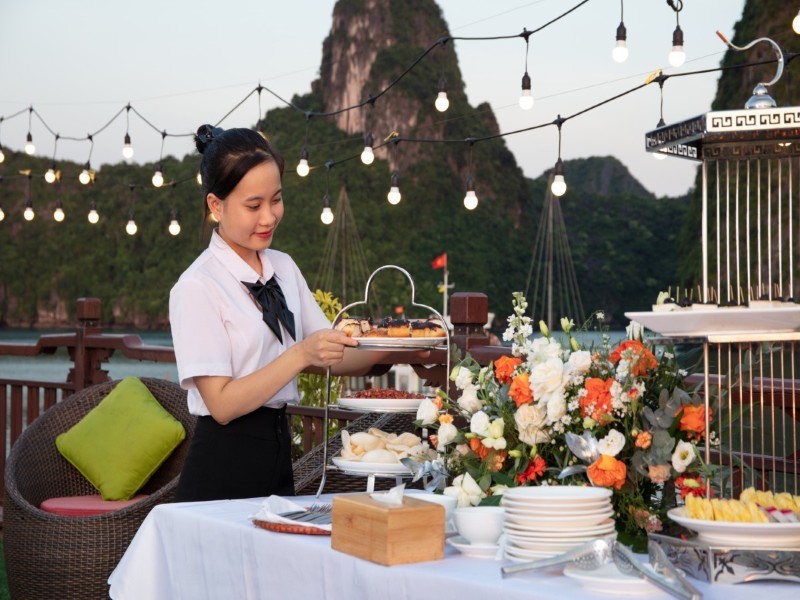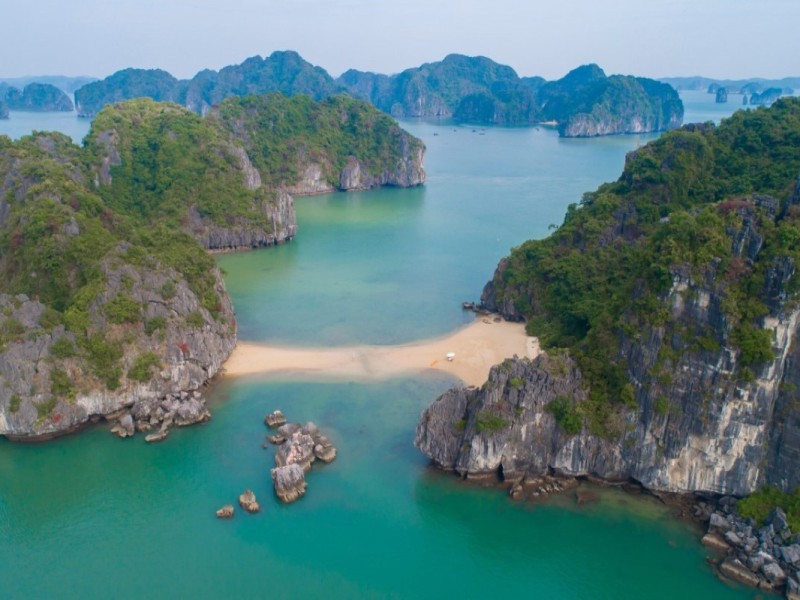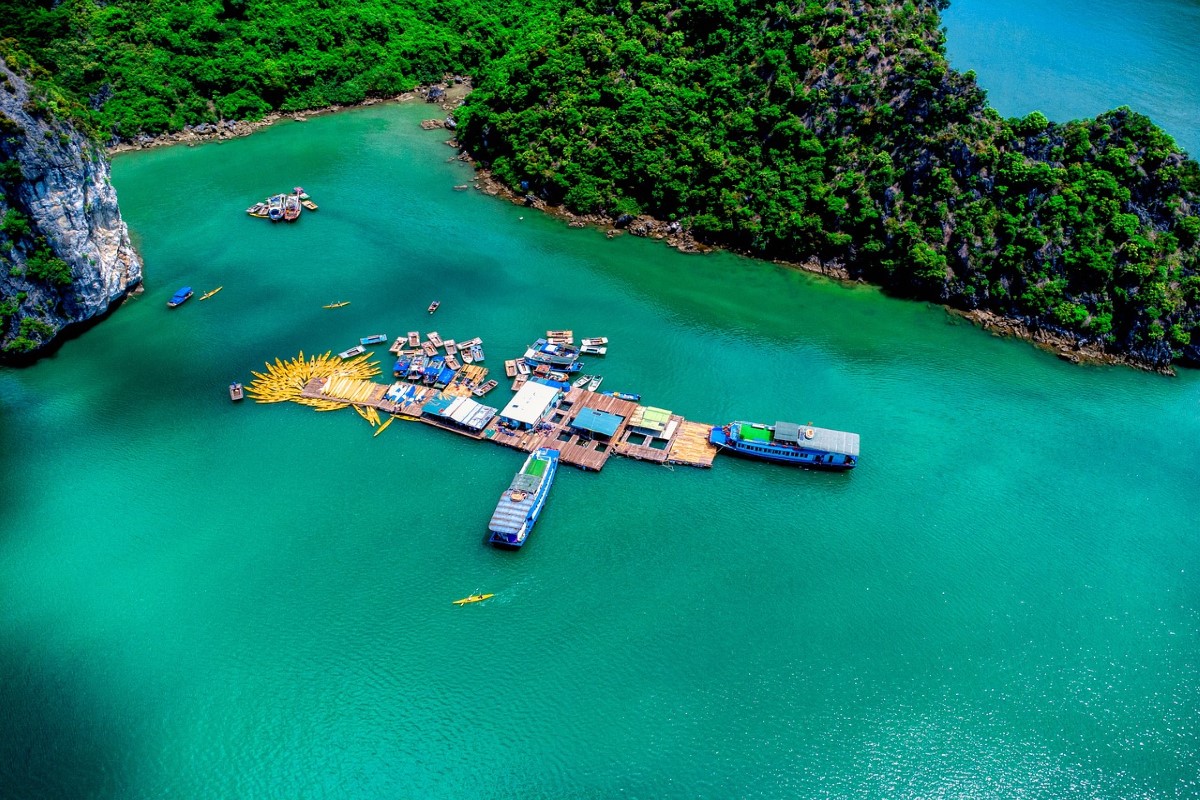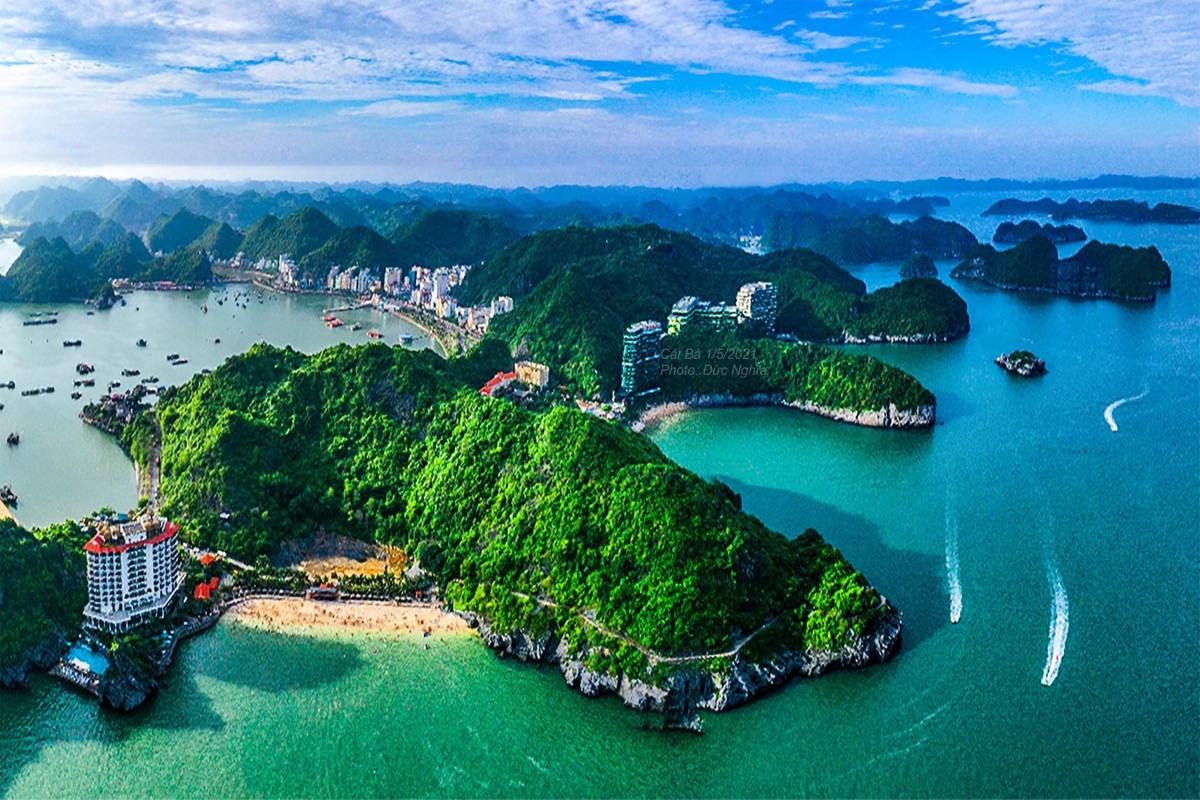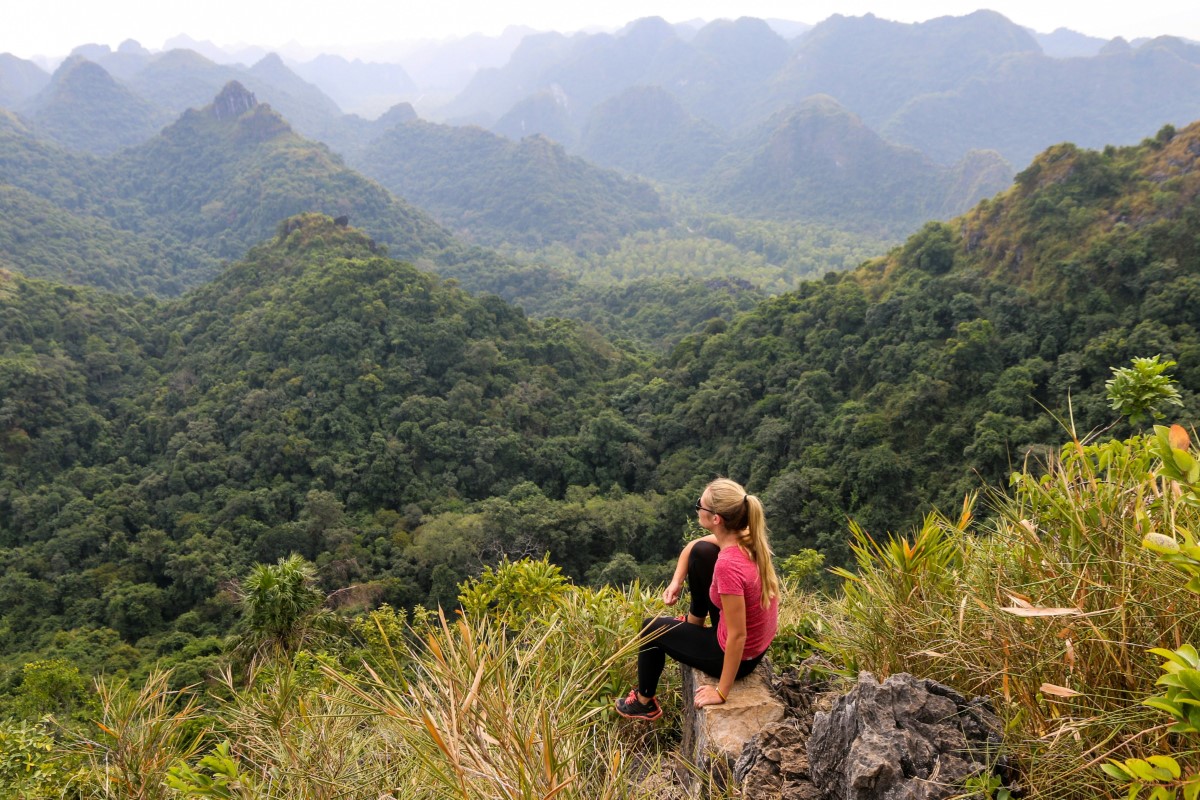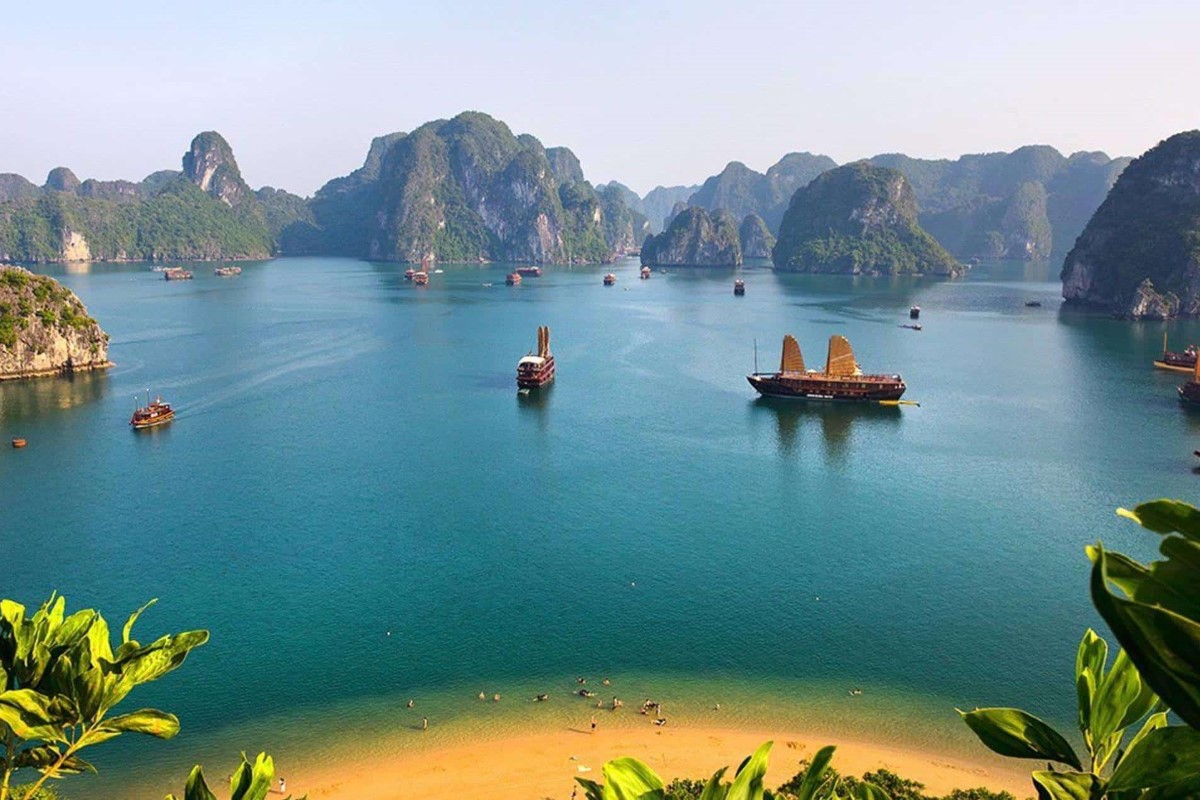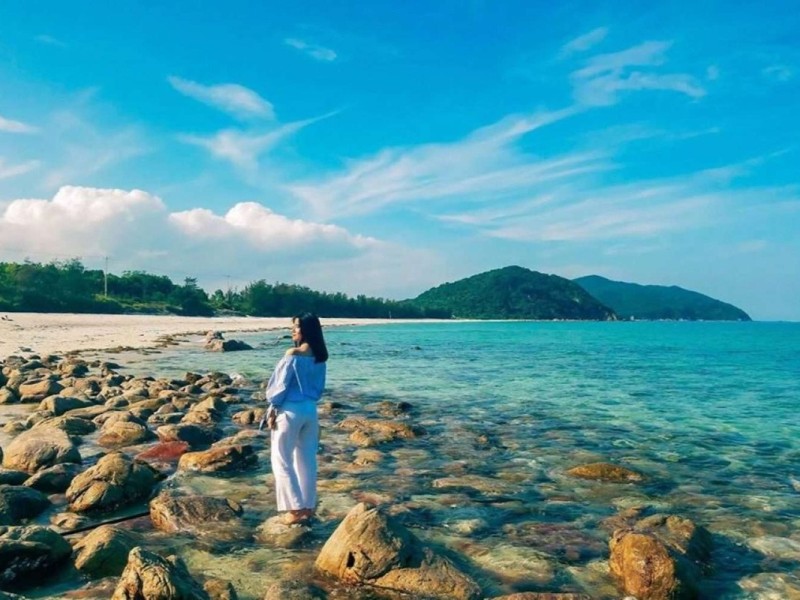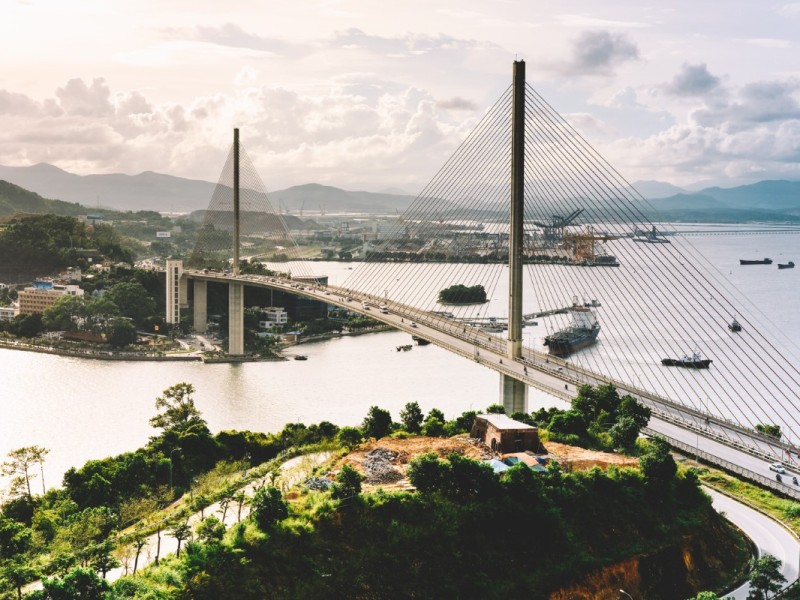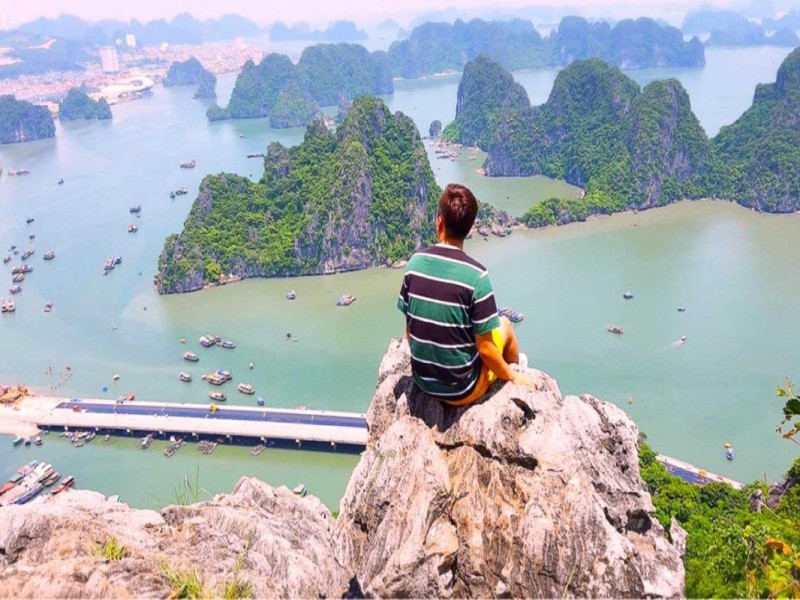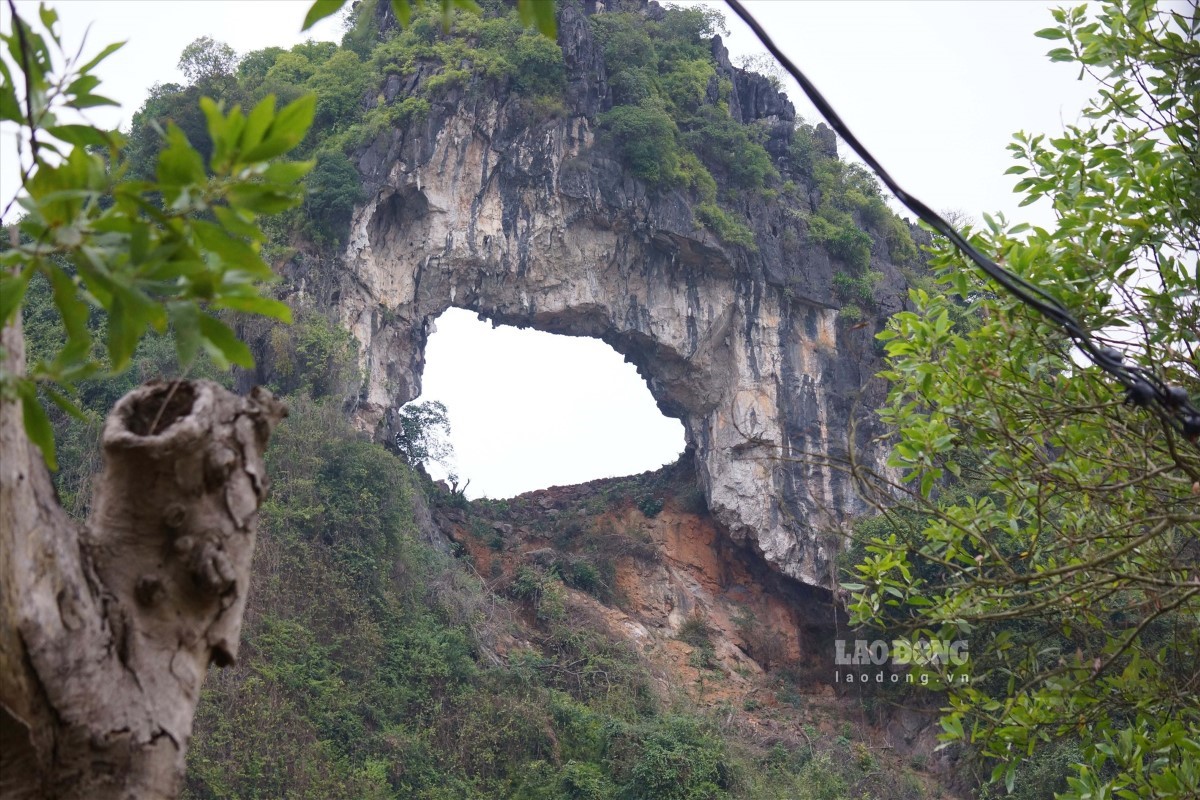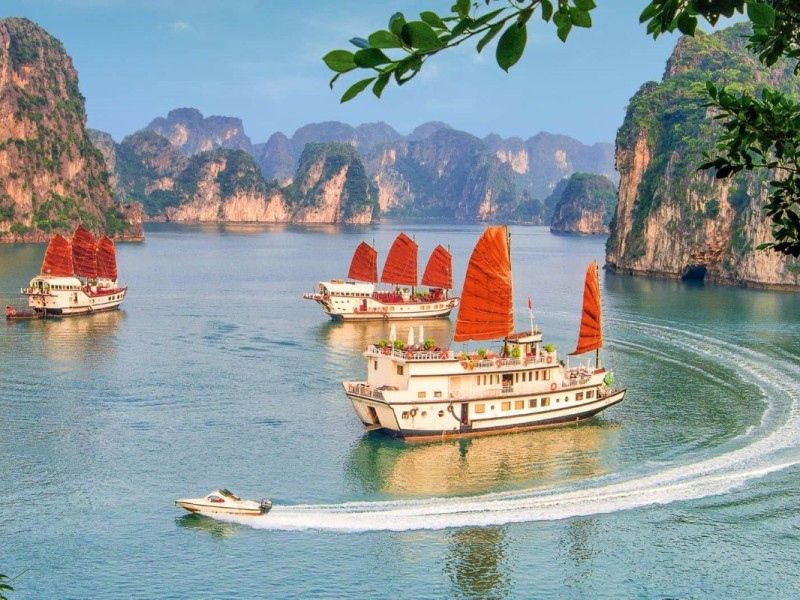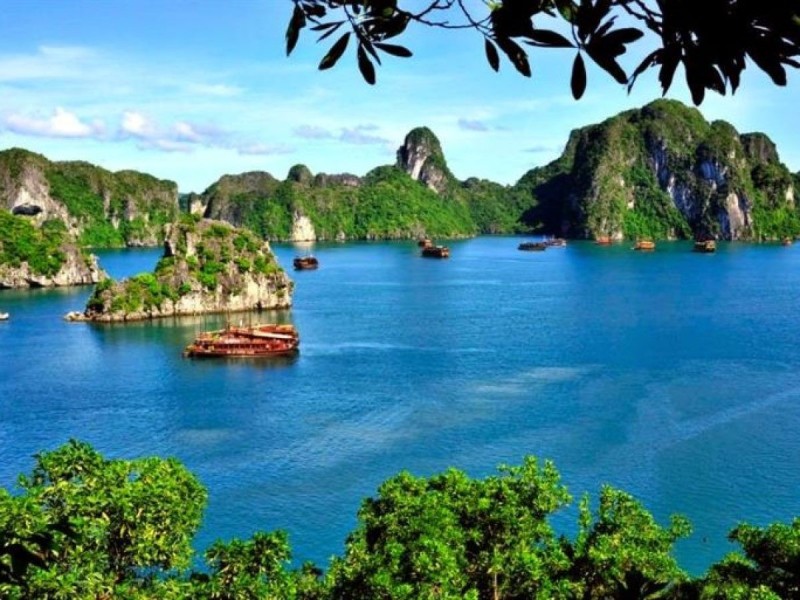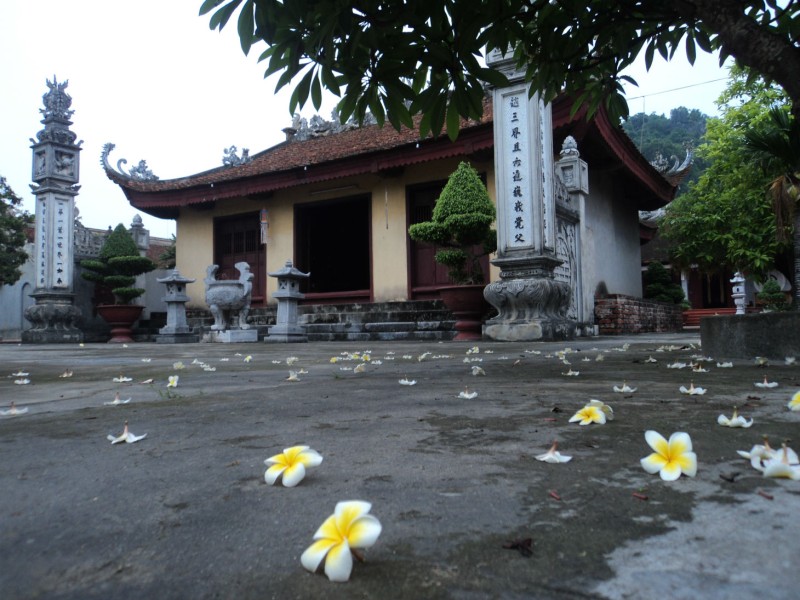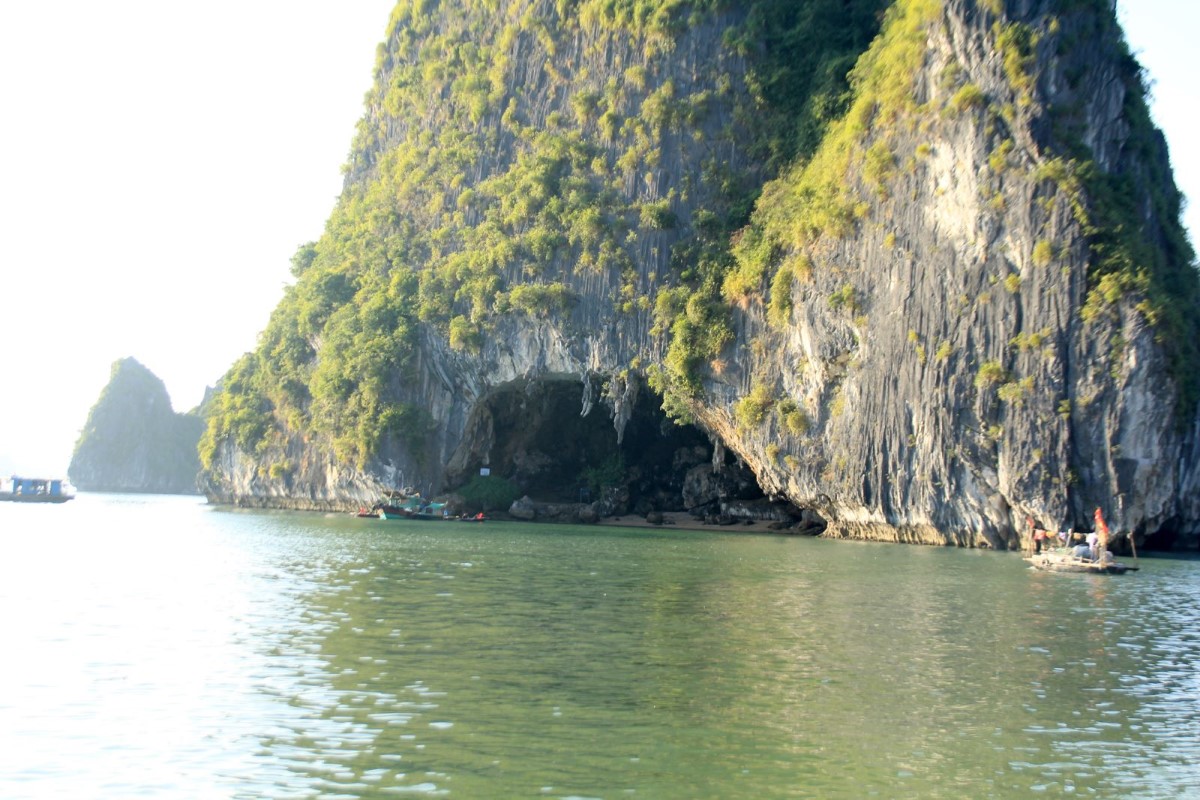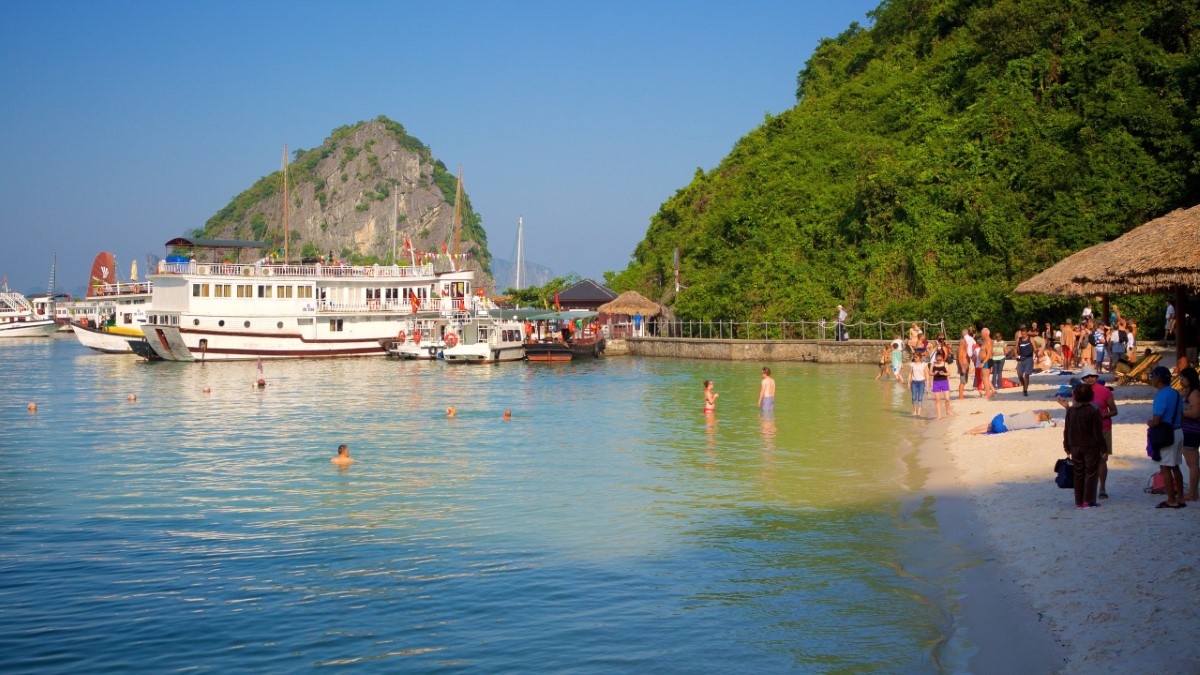Cap La Island in Bai Tu Long Bay: Authentic Floating Village Guide
Cap La Island in Bai Tu Long Bay offers an authentic experience of Vietnam’s floating village life, featuring traditional fishing communities, scenic limestone karsts, and pristine waters. Visitors can explore local culture and natural beauty in a peaceful, less crowded setting.
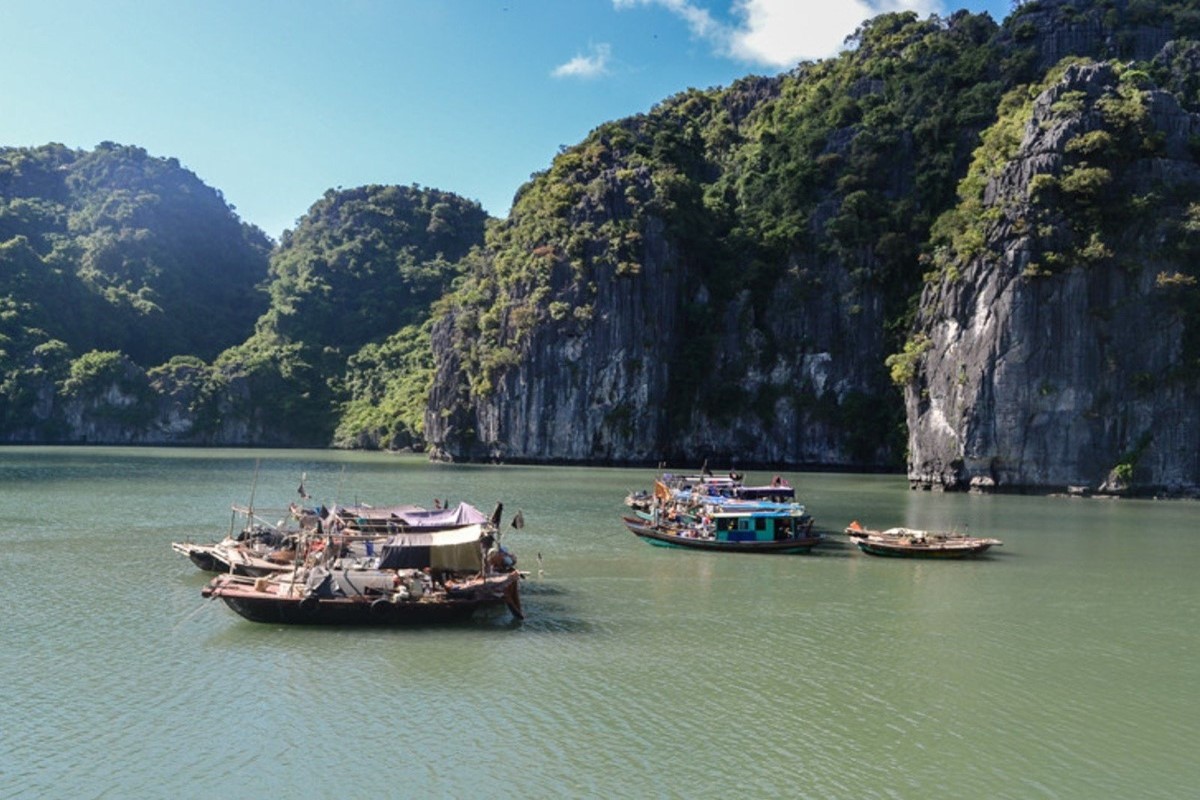
Discovering Cap La Island – Your Perfect Escape
Imagine a place where emerald waters meet golden sands, framed by lush greenery and dramatic limestone karsts. Cap La Island in Bai Tu Long Bay is that rare gem—untouched, serene, and inviting you to step away from the noise of everyday life. Here, the natural environment unfolds in peaceful harmony, offering a unique blend of adventure and tranquility. Whether you’re seeking pristine beaches or quiet moments surrounded by nature’s beauty, Cap La Island promises an escape unlike any other.
This island stands out not just for its breathtaking views but for its authentic atmosphere, untouched by mass tourism. If you crave a true connection with Vietnam’s coastal charm, this is the place to explore. Let the calm waves and vibrant marine life draw you in as you experience one of the most beautiful Bai Tu Long Bay islands. It’s a destination made for discovery, where every corner reveals another peaceful surprise.
Take the first step to uncover why Cap La Island is the perfect retreat for your next adventure. Discover the serene beaches and natural wonders waiting to be explored.
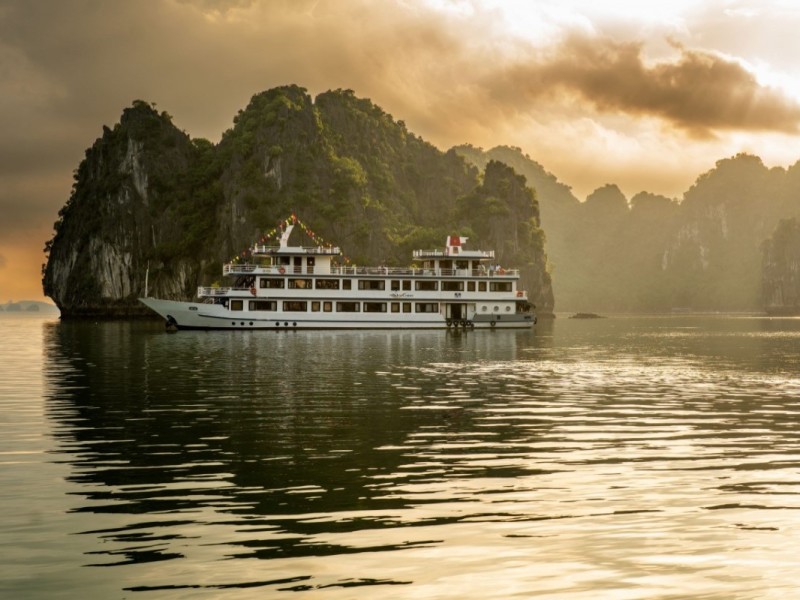
What Makes Cap La Island So Special
What truly sets Cap La Island apart is its untouched, unique character that offers an authentic alternative to the bustling Halong Bay. Unlike the crowded tourist hubs, this island remains a hidden sanctuary. Its pristine beaches are free from crowds, where soft sands meet crystal-clear waters. The striking limestone karsts rise majestically from the sea, creating a dramatic landscape that captivates all who visit.
The island’s rich marine life thrives among vibrant coral reefs, offering incredible snorkeling opportunities. This ecological diversity highlights Cap La Island as a treasure trove for nature lovers and eco-tourists. It is an invitation to experience the raw beauty of Vietnam’s coastline in a way that few destinations can match.
Choosing Cap La Island means embracing a quieter, more peaceful journey. It stands as a refreshing Halong Bay alternative, appealing to travelers who value authenticity and tranquility over crowded spots. Your visit here will feel like discovering a secret paradise, just waiting to be explored.
Plan your journey to experience this unique blend of natural wonders and peaceful charm on Cap La Island.
The untouched natural beauty and serene beaches
The beaches on Cap La Island are nothing short of spectacular. Imagine soft, golden sands stretching along tranquil shores, kissed by gentle waves of emerald waters. The atmosphere here is calm, framed by lush greenery that rustles softly in the sea breeze. These pristine beaches offer a perfect spot to relax, swim, or simply soak in the serene beauty surrounding you.
Every beach feels private and unspoiled, inviting you to disconnect and immerse yourself fully in nature. The clarity of the water reveals a vibrant underwater world, while the quiet ambiance makes it an ideal place for reflection and peace.
Enjoying the serene beauty of these beaches is a highlight of visiting Cap La Island. Let yourself be carried away by the natural rhythm of this untouched environment.
Unique limestone karst formations and coral reefs
One of the defining features of Cap La Island is its spectacular limestone karsts, which rise sharply from the sea, sculpted over millennia into striking shapes. These formations are part of the larger geological wonder of Bai Tu Long Bay, but here they feel more intimate and accessible.
Beneath the water’s surface, vibrant coral reefs thrive, home to a diverse array of marine life. While not overly scientific, it’s clear that this biodiversity adds to the island’s appeal. Snorkelers can expect to encounter colorful fish and healthy coral gardens that make for unforgettable underwater exploration.
This blend of geological majesty and marine richness makes Cap La Island a haven for eco-tourists and adventure seekers alike. Exploring its limestone karsts and coral reefs offers both excitement and a deep appreciation of nature’s artistry.
Discover the wonders of this natural environment on your visit and connect with the island’s vibrant ecosystem.
A quieter alternative to Halong Bay’s busy spots
If you have explored Halong Bay, you may be looking for a quieter, more authentic escape. Cap La Island offers just that. It is a peaceful retreat, free from the crowds and noise typical of more popular destinations.
This island’s charm lies in its unspoiled landscape and genuine local culture. As a Halong Bay alternative, it provides travelers with a chance to enjoy similar natural beauty but with a more relaxed, intimate atmosphere. Here, you can savor the calm waters, pristine beaches, and stunning views without feeling rushed or overwhelmed.
For those seeking a quiet island in Vietnam, Cap La Island is a perfect choice. It invites you to slow down, unwind, and experience the coastal magic on your own terms.
Plan your visit to enjoy a tranquil escape on this hidden paradise.
Sophia's Reality Check: What Cap La Isn't (And Why That's Good)
When I first envisioned my trip to Vietnam's legendary bays, I pictured Halong – bustling cruise ships, lively floating markets, and perhaps even a luxury resort nestled among the karsts. But my recent exploration of Cap La Island in Bai Tu Long Bay wasn't just a deviation from that well-trodden path; it was a profound recalibration of what "paradise" truly means, revealing an unspoiled charm I hadn't dared to expect.
Stepping onto the sandy shore of Cap La, my initial feeling was a mix of mild surprise and an almost immediate sense of calm. There were no grand piers, no souvenir hawkers, no thumping bass from distant party boats. Instead, the air carried the faint, salty scent of the sea and the quiet hum of cicadas. My expectation of finding a "mini-Halong Bay" with its attendant tourist infrastructure quickly evaporated, replaced by a much more appealing reality: this was genuinely untouched. The silence, punctuated only by the gentle lapping of waves against the shore and the distant calls of seabirds, was almost deafening in its beauty. I noticed the absence of typical resort amenities—no sprawling beachfront restaurants, no jet skis whizzing by. What was initially an "isn't" quickly transformed into a "thank goodness it isn't."
Our journey of discovery unfolded organically. Instead of being herded onto a large group tour, we joined a small, local boat – just a handful of fellow travelers and the soft-spoken captain, a man whose weathered hands spoke of a lifetime spent navigating these waters. We glided past emerald-green islets, their limestone faces worn smooth by centuries of wind and rain, each one a unique sculpture. The water, unlike some of the busier sections of the bay, was astonishingly clear, revealing glimpses of coral reefs just below the surface. There was a moment when our captain cut the engine entirely, letting the boat drift silently. I looked around, and all I saw was the raw, breathtaking beauty of nature. No other boats were in sight, just us, the karsts, and the vast, open sky. It was a sensation of pure, unadulterated solitude that a luxury resort could never offer. This unexpected quietude forced me to slow down, to truly see and feel the environment around me. It was a challenge, in a way, to disengage from the constant stimulation of modern life, but one that quickly became a profound delight.
The simplicity of our interactions with the local fishing communities underscored this authentic appeal. There were no elaborate tourist shows, just genuine smiles and glimpses into their daily lives as they tended to their nets or shared fresh seafood. I remember the taste of the grilled fish, caught just hours before, seasoned simply and cooked over an open flame on our boat. It wasn't gourmet dining, but its freshness and the setting made it the most memorable meal of my trip. The textures were incredible – the firm, flaky fish, the slightly gritty sand beneath my toes as we later walked on a deserted beach, the cool, salty spray on my face during a brief shower. Each sensory detail reaffirmed that this was not a manicured tourist attraction; it was real, raw, and wonderfully unpolished. My initial hesitation about the lack of "comforts" morphed into a deep appreciation for the island's unadorned beauty and its ability to foster true connection with nature and local culture.
Unique Insights & Demonstrated Expertise:
- The Power of Simplicity: Cap La’s charm lies precisely in what it lacks compared to more developed destinations. Embrace the absence of luxury; it's where the authentic experience truly begins.
- Small Group is Key: To genuinely experience the island's tranquility and connect with its essence, opt for smaller, locally-run boat tours. Larger cruises tend to stick to more crowded routes.
- Unplug to Recharge: Limited connectivity isn't a drawback here – it’s an invitation. Use it as an opportunity for a true digital detox and deeper immersion.
Actionable Practical Takeaways:
- Go with a Local: Prioritize tour operators with deep local ties; they often know the most secluded spots and facilitate genuine cultural interactions.
- Pack Light, But Smart: Essentials include reef-safe sunscreen, a wide-brimmed hat, insect repellent, a reusable water bottle, and a quick-dry towel. Don't overpack with unnecessary "resort wear."
- Manage Expectations: Understand that amenities are basic. Embrace it. This isn't a pampered retreat; it's an adventure into unspoiled nature.
- Engage Respectfully: If you encounter local fishing communities, a warm smile and simple "Xin chào" (hello) go a long way. Always ask permission before taking photos.
- Bring Cash: While tours are usually booked online, small purchases from local vendors might require Vietnamese Dong.
My Cap La Island "reality check" was perhaps the most beautiful surprise of my entire journey. It wasn't the bustling, resort-filled paradise I initially imagined, but something far more precious: an authentic slice of untouched beauty, a haven of tranquility that resonated deeply with my soul. If you're seeking a genuine escape, a place where the loudest sound is the ocean breeze and the brightest lights are the stars, then Cap La Island is waiting. It’s not just a destination; it's an experience that reminds you what true travel is all about.
Recommendation: If your heart yearns for quiet coves, crystal-clear waters, and a profound connection with nature, then I wholeheartedly recommend Cap La Island. It's the perfect antidote to overtourism, a chance to rediscover simplicity and witness the breathtaking, unspoiled beauty of Bai Tu Long Bay firsthand. Don't just visit; experience Cap La.
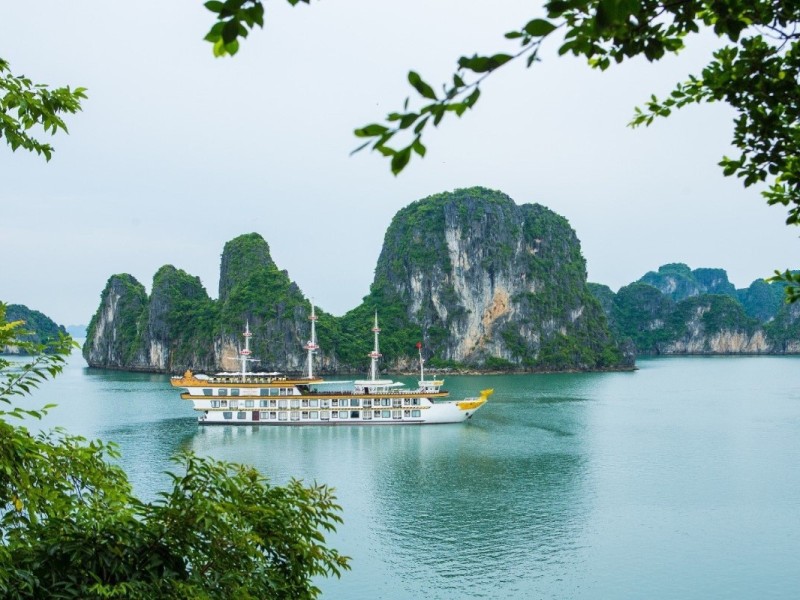
Where Exactly Is Cap La Island?
Finding Cap La Island location is easier when you know its place within the stunning Bai Tu Long Bay islands. This island lies tucked away in the northeastern waters of Vietnam, near the Van Don archipelago, and not far from the more famous Ha Long city. Many travelers use maps highlighting Cap La Island as a quiet jewel in the bay, offering a less crowded alternative to more popular spots.
Knowing the exact Cap La map and surrounding landmarks helps you plan your trip efficiently. The island’s position within Bai Tu Long Bay makes it accessible yet secluded, offering travelers both convenience and peace.
Explore Cap La Island location on a detailed map before you go to ensure smooth travel arrangements.
Location within Bai Tu Long Bay and proximity to Van Don and Ha Long
Cap La Island Van Don lies approximately 30 kilometers from Van Don mainland and around 40 kilometers from Ha Long city. Travel times vary, but boat tours commonly depart from Van Don Port and Cai Rong Pier in Ha Long, making it a reachable yet tranquil destination.
The island is part of the rich Bai Tu Long Bay coordinates region, known for its unique limestone formations and pristine waters. This positioning connects it geologically and culturally to the broader bay area.
Planning your journey from Van Don or Ha Long ensures convenient access to Cap La Island while enjoying the scenic voyage through Bai Tu Long Bay.
How the island fits into the greater geological and cultural landscape
Bai Tu Long Bay geology is defined by spectacular limestone karsts rising dramatically from emerald waters, and Cap La Island plays a key role within this natural wonder. Formed over millions of years, these karsts create an iconic seascape recognized worldwide.
Culturally, Cap La reflects the rhythms of nearby fishing communities that have thrived in harmony with the sea for generations. The island and its surroundings embody a living heritage that connects people deeply with nature’s cycles.
Understanding Cap La cultural context enriches your visit, offering insight into both the geological marvel and the vibrant local traditions shaped by the bay’s unique environment.
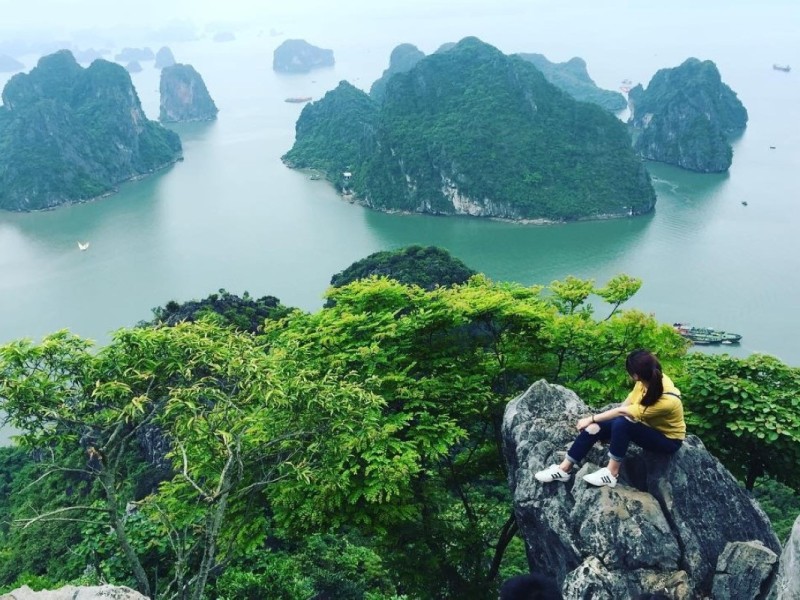
A Glimpse Into the Island’s History and Local Culture
The Cap La Island history is intertwined with the stories of the sea and the fishing communities of Bai Tu Long Bay. Though less commercialized than neighboring destinations, the island holds centuries of maritime heritage reflected in its way of life.
Visitors can witness how the traditional fishing villages of Vietnam continue to maintain their age-old practices, offering a window into the daily lives shaped by the bay’s bounty. These communities’ connection to the sea remains strong, evident in their customs and festivals.
Learning about Bai Tu Long Bay culture and fishing communities Vietnam deepens your appreciation of the island beyond its natural beauty.
Origins and formation of Cap La Island
The Cap La formation is a fascinating story of nature’s slow artistry. Like much of Bai Tu Long Bay, the island’s limestone cliffs and karsts were shaped over millions of years through erosion and sedimentation.
This geological history creates the island’s rugged yet beautiful terrain, perfect for exploration and adventure. Understanding this past enhances your experience by connecting the landscape to the broader natural history of the region.
Discover the island’s geological history Bai Tu Long Bay to appreciate its place in Vietnam’s coastal wonders.
Cultural traditions of nearby fishing communities
Life on and around Cap La fishing villages revolves around the sea. Local fishermen follow time-honored Vietnamese fishing traditions, passing down knowledge through generations. Daily routines often align with tides, seasons, and weather patterns, reflecting a profound respect for nature.
Visitors have the chance to observe and sometimes engage with these communities, experiencing a culture deeply connected to the ocean’s cycles.
Immerse yourself in authentic Vietnamese fishing traditions to understand the heart of the island’s local life.
Festivals and local folklore tied to the island
The island and surrounding areas celebrate various Cap La festivals that honor the sea and local heritage. These community events include ceremonies, traditional music, and storytelling, keeping alive the rich Bai Tu Long Bay folklore.
Though modest in scale, these festivals offer travelers a glimpse of cultural life rarely seen in mainstream tourism.
Plan your visit to coincide with local celebrations and enrich your travel experience with these unique traditions.
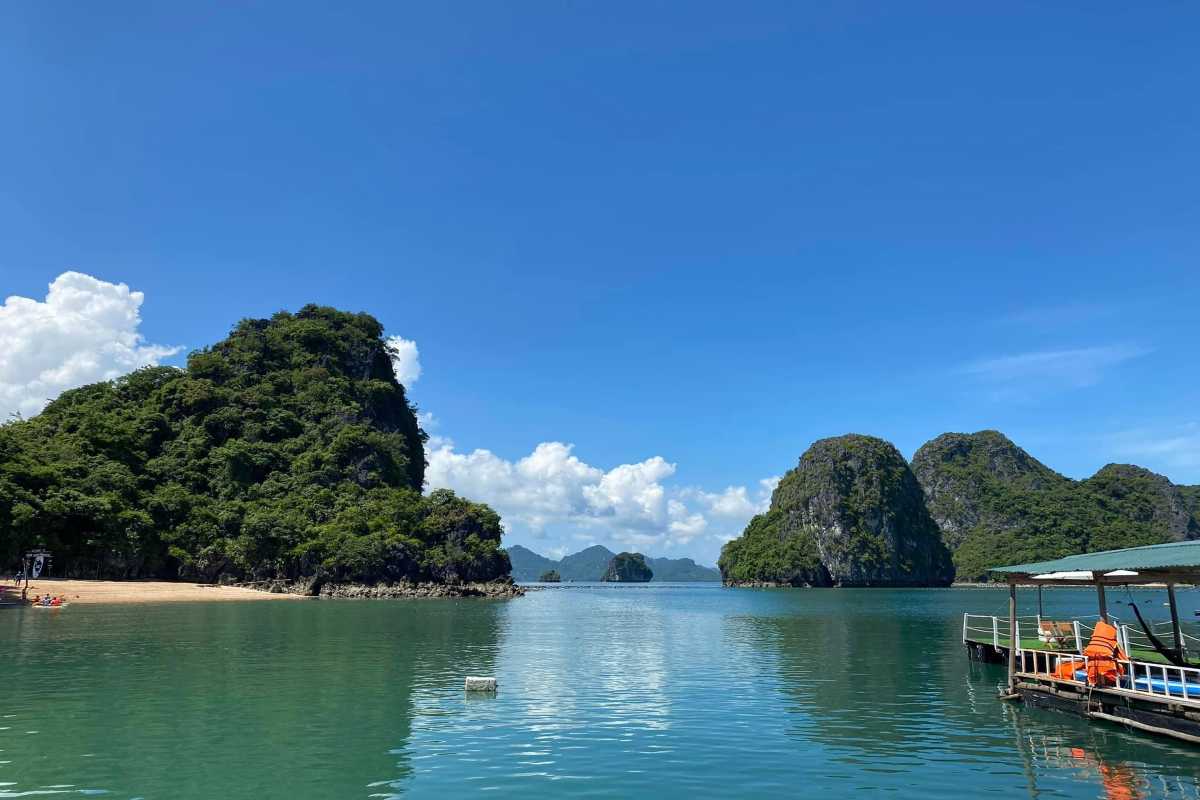
Planning Your Visit – Practical Tips & Essentials
Planning your trip to Cap La Island can be straightforward when you know the best routes and options. Whether you're arriving from Ha Long City or nearby Van Don, understanding your transportation choices helps you enjoy a smooth journey. Timing your visit to the right season can make a huge difference in your experience, ensuring you catch the best weather and avoid crowds. Preparing well will help you relax and immerse yourself fully in the island’s natural beauty.
Make your travel planning easier by following these practical tips and recommendations for transportation, timing, and tour selection on Cap La Island.
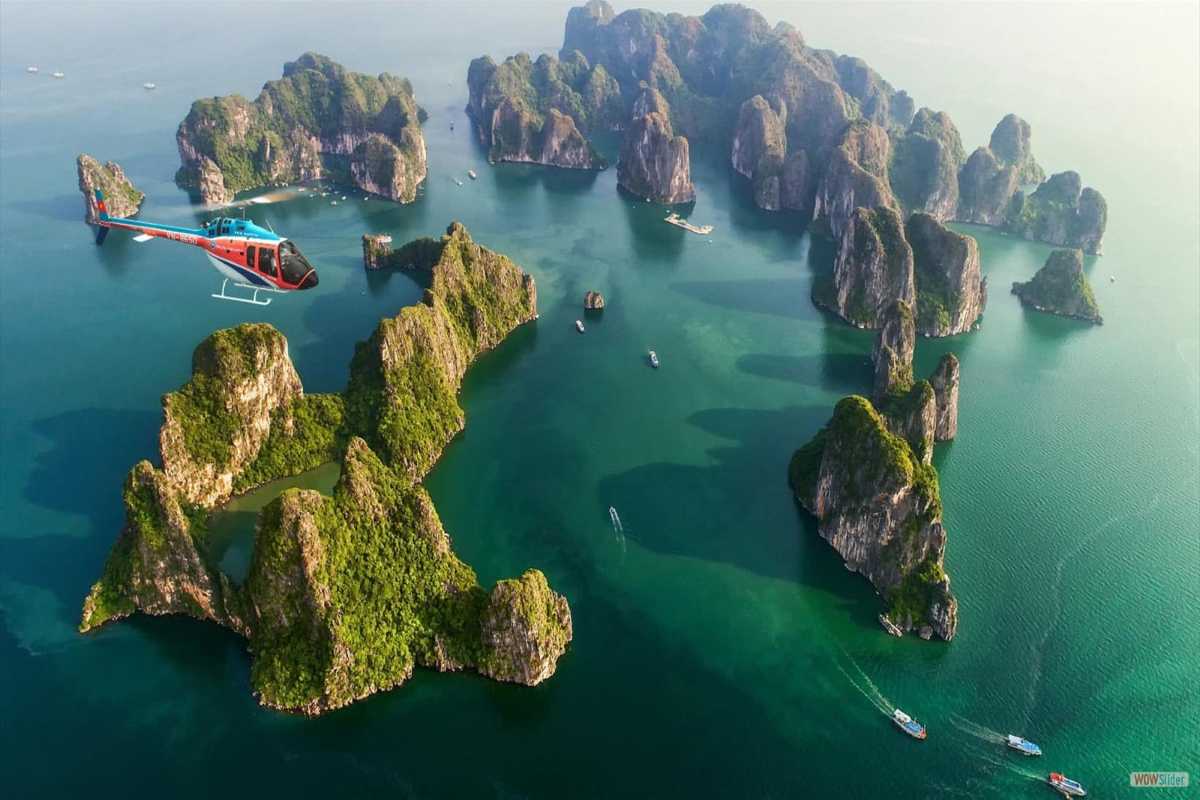
Getting to Cap La Island Made Easy
Getting to Cap La Island is simpler than you might expect. The two main gateways are Cai Rong Pier in Ha Long and Van Don Port. From these points, regular boat tours and ferries run to the island, providing scenic and direct access. Choosing the right departure point depends on where you start and the type of experience you want. Many visitors prefer Van Don Port for its proximity and less crowded terminals.
Consider booking your boat tour in advance, especially during peak season, to secure your spot and preferred schedule. Understanding Cap La transportation options is the key to a hassle-free start to your island adventure.
Plan ahead and choose the best route to ensure a smooth arrival on Cap La Island.
Boat tours from Cai Rong Pier and Van Don Port
Most visitors reach Cap La Island by boat tours departing from Cai Rong Pier in Ha Long or Van Don Port. Tours from Cai Rong Pier Cap La usually run several times daily, offering a range of boats from speedboats to traditional junks. Meanwhile, Van Don Port tours tend to be less crowded and provide a more relaxed boarding experience.
Typical schedules vary but expect departures mostly in the morning, with return trips in the afternoon. Boat types range from fast ferries for day trips to slower vessels ideal for multi-day tours exploring the wider Bai Tu Long Bay area.
Choosing the right departure point and boat style can set the tone for your visit. Check ferry schedules and book accordingly to match your itinerary.
Transportation options from Ha Long City and Van Don District
To reach the main piers, travelers can use several ground transportation options. From Ha Long City, shuttle buses and taxis connect to Cai Rong Pier, often taking 45 minutes to an hour depending on traffic. Similarly, in Van Don District, taxis and private transfers provide convenient rides to Van Don Port.
If you prefer flexibility, renting a car or booking a private transfer is also an option, offering direct, comfortable travel. Public buses serve the route but may have limited schedules and stops.
Knowing these options ensures your last-mile journey to Cap La Island is smooth and stress-free, helping you start your trip relaxed and ready to explore.
Tips for choosing the right tour operator
Choosing the right tour operator is essential for a safe and enjoyable experience on Cap La Island. Look for operators with strong safety records, positive tour reviews, and clear information about what’s included. Reputable companies often provide knowledgeable guides, quality boats, and transparent pricing.
Reading recent feedback from other travelers can help you avoid common pitfalls. Check if the operator supports sustainable tourism and engages with local communities, enhancing your visit's authenticity.
Making an informed choice ensures your trip to Bai Tu Long Bay is memorable for all the right reasons. Prioritize quality and trust when booking your Cap La tours.
Omar's Guided Journey: Uncovering Hidden Gems with a Local Expert
Most of my travel planning revolves around DIY exploration, armed with maps and online reviews. But for Cap La Island, something told me to invest in a local guide, and it turned out to be the single best decision I made. My journey with Mr. Phuc, a quiet fisherman whose family had lived in Bai Tu Long Bay for generations, wasn't just a tour; it was like unlocking a secret level of the island, revealing layers of beauty and stories I simply couldn't have discovered on my own.
From the moment we met at Cai Rong Pier, Mr. Phuc's presence was reassuring. He didn't speak much English, but his warm smile and steady gaze spoke volumes. As we puttered away from the busy port in his traditional wooden boat – far smaller and more intimate than the larger tourist vessels – a sense of anticipation grew. My expectation was for him to simply navigate us to the well-known spots. What I got instead was a masterclass in local wisdom. He pointed out subtle shifts in the tide that would have been invisible to me, explaining how they affected the fishing patterns. He knew the specific, almost imperceptible currents that allowed us to glide effortlessly through narrow passages in our kayak later that day. This wasn’t just navigation; it was a deep, intuitive understanding of the bay as if it were an extension of his own body.
The true magic unfolded as we ventured deeper. While other boats were congregating at a popular cave, Mr. Phuc veered off, gesturing towards a barely visible crevice in a towering karst. "Secret," he whispered, a twinkle in his eye. We slipped into our kayaks and paddled into what felt like a hidden world. The cave wasn't grand, but it was pristine, with glistening stalactites and the echo of dripping water. He explained in broken English, with hand gestures, a local legend tied to this particular cave – a tale of star-crossed lovers that added a poignant layer to the already breathtaking scenery. It wasn't in any guidebook. The air inside was cool and damp, carrying the earthy scent of ancient rock. As we exited, the sunlight burst through, blinding us for a moment before revealing a tiny, secluded beach, no bigger than a living room, completely untouched. The sand was impossibly fine, the water crystal-clear, and the silence profound. It was a fleeting, private moment that felt like pure discovery, a privilege shared by few.
Later, he led me to a small, floating house, not a commercial one, but a family's home. His sister offered us tiny, sweet mandarins and fresh coconut water, laughing as I tried to mimic a few Vietnamese phrases. This wasn't a curated "cultural experience"; it was simply authentic, everyday life, shared with genuine hospitality. Mr. Phuc, though quiet, was a fount of knowledge, sharing insights into the local ecosystem, the challenges faced by fishing communities, and the subtle beauty of Bai Tu Long Bay's less-explored corners. His expertise was in his very being, his deep connection to the land and sea. I realized that without him, I would have seen the surface of Cap La, but never truly felt its heartbeat.
Unique Insights & Demonstrated Expertise:
- Beyond the Brochure: A true local guide offers access to places and stories not found in guidebooks or mainstream tours, adding depth and exclusivity to your trip.
- Safety and Navigation: Local guides possess invaluable knowledge of tides, currents, and hidden passages, ensuring a safer and more efficient exploration of the bay.
- Cultural Bridge: They facilitate authentic interactions with local communities, allowing for genuine cultural exchange rather than staged performances.
- Environmental Awareness: Many local guides have an inherent understanding of the fragile ecosystem and can share insights on responsible tourism practices.
Actionable Practical Takeaways:
- Seek Out Independent Local Guides: Don't just rely on large tour companies. Look for smaller, family-run operations or ask for recommendations from trusted sources for a more personalized Cap La local guide.
- Communicate Your Interests: Even with a language barrier, try to convey what you're hoping to experience (e.g., "quiet," "local life," "hidden spots"). A good guide will adapt.
- Embrace the Unscripted: Some of the best moments will be the spontaneous ones a local expert facilitates. Be open to unexpected detours and interactions.
- Ask Questions (Patiently): Even if communication is challenging, a curious attitude and simple questions can lead to fascinating discoveries.
- Negotiate Fairly: Value their expertise. Guided tours in Cap La offer immense value beyond just transportation.
My time with Mr. Phuc transformed my visit to Cap La Island from a sightseeing trip into a deeply immersive journey. His silent wisdom and intimate knowledge of the bay revealed a side of Vietnam I hadn't imagined possible. If you want to truly experience Cap La, not just see it, then finding a knowledgeable local guide is non-negotiable. They are the true keys to unlocking Bai Tu Long Bay's most authentic secrets.
Recommendation: For an unparalleled and genuinely enriching adventure, booking guided tours on Cap La Island with a local expert is an absolute must. It will elevate your trip from memorable to truly transformative, offering insights and experiences you simply can't find elsewhere.

When Is the Best Time to Visit?
Choosing the right time to visit Cap La Island can greatly enhance your experience. The island’s weather varies with the seasons, affecting everything from sea conditions to crowd levels. Understanding the climate and local rhythms helps you plan a trip that fits your preferences, whether you seek sunny days for beach activities or a quieter, more reflective visit during off-peak times.
Knowing the best time to visit Cap La ensures you make the most of the island’s natural beauty and cultural charm, avoiding unexpected weather disruptions or busy tourist periods.
Plan your travel around the Cap La weather patterns to enjoy your perfect escape.
Weather patterns and dry season advantages (October to April)
The Cap La dry season runs from October to April, offering the most favorable conditions for visiting. During these months, temperatures hover comfortably between 20 to 30 degrees Celsius, and rainfall is minimal. Calm seas and clear skies make it ideal for boating, snorkeling, and hiking around the island.
This tropical climate ensures that outdoor activities can be enjoyed without interruption, and the dry season is often considered the peak season for Bai Tu Long Bay tours. The pleasant weather highlights the island’s emerald waters and limestone karsts in their full glory.
Plan your visit during this season for the best balance of sunshine and serenity.
Avoiding peak tourist times for a peaceful experience
To experience the tranquility of Cap La Island, it’s wise to avoid peak tourist seasons. National holidays and Lunar New Year periods often bring crowds to the region, diminishing the island’s peaceful charm. Traveling during the Cap La off-season or shoulder months means fewer visitors, more space on beaches, and a more authentic connection with local life.
If you prefer quiet moments and unobstructed views, plan your trip outside major holiday times. This approach supports both your enjoyment and responsible tourism, helping preserve the island’s natural serenity.
Choose your dates carefully to avoid crowds and savor the island’s calm atmosphere.
Special events and festivals worth timing your visit for
While Cap La Island is mostly known for its natural beauty, it also hosts unique Cap La events and participates in Bai Tu Long Bay festivals that celebrate local culture and community life. These occasions offer visitors a chance to witness traditional ceremonies, music, and customs that enrich the travel experience.
Timing your visit to coincide with these cultural celebrations adds depth to your journey, allowing you to engage more fully with the island’s heritage.
Explore local calendars to discover upcoming festivals and plan your trip around these special moments for a truly immersive visit.
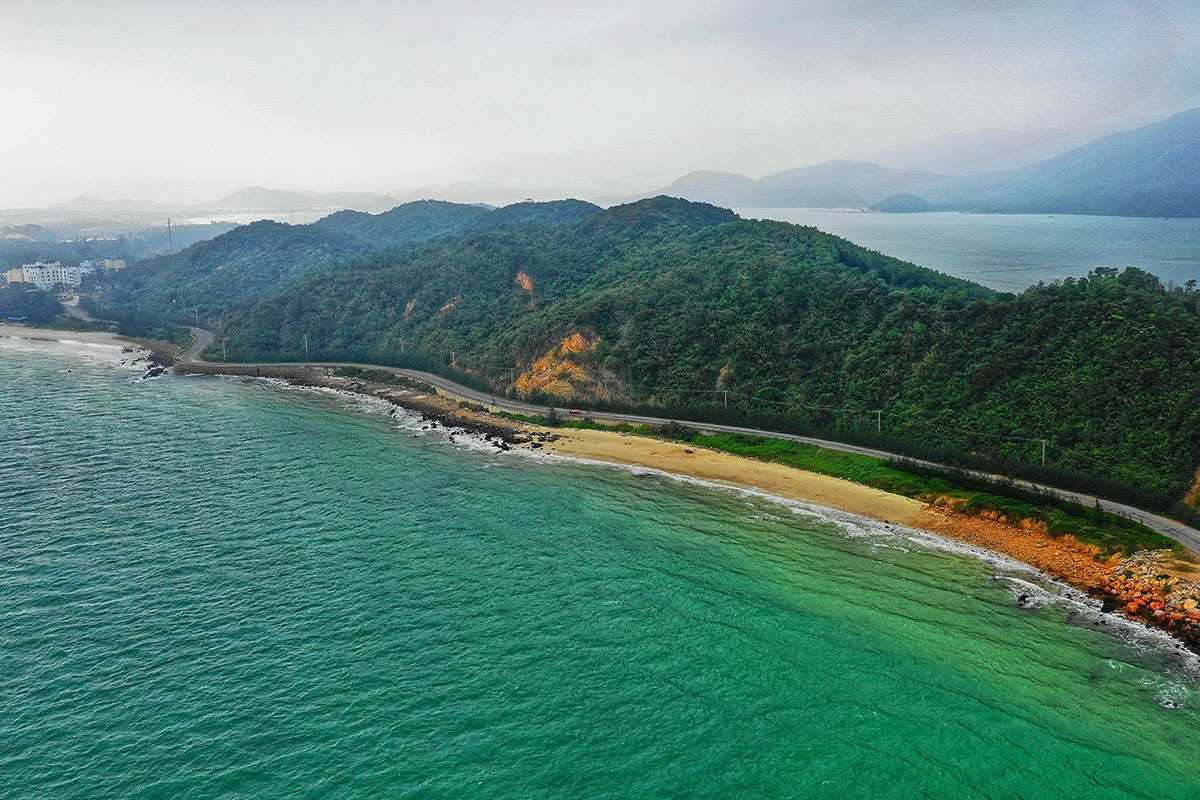
Understanding Entry Fees and Booking Details
When planning your visit to Cap La Island, knowing the Cap La entry fee and Cap La tour costs upfront helps you budget effectively. Entry fees vary depending on whether you join a day tour or opt for a longer stay. Transparent pricing lets you make informed decisions and avoid surprises.
Understanding how booking works, whether online or on-site, ensures your trip goes smoothly without last-minute hassles. With clear cost breakdowns and trusted booking advice, you can finalize your plans confidently.
Be sure to review tour options and fees early to align your budget with the best available experience on Cap La Island.
Typical costs included in boat tours
Most Cap La tour inclusions cover essential elements like boat transport, lunch, guided activities, and permits for protected areas in Bai Tu Long Bay. Some tours also provide snorkeling gear and refreshments.
Knowing what’s included helps you compare offers and avoid paying extra for basic services. Meals and permits are often bundled, simplifying your expenses, but always verify with your operator before booking.
Having a clear picture of the cost of Bai Tu Long Bay tour keeps your trip budget transparent and manageable.
Options for guided tours vs. self-guided exploration
Choosing between a Cap La guided tour and a Cap La self-guided trip depends on your travel style and preferences. Guided tours offer expert knowledge, safety, and convenient logistics, ideal for first-timers or those seeking structured experiences.
Self-guided exploration appeals to adventurers who prefer flexibility and independence, though it requires more preparation and adherence to local regulations on Cap La Island. Be aware that some areas might require permits or restrictions favor guided access.
Consider your comfort level and priorities to select the best travel style for your visit.
How to book online or on-site
Booking your Cap La tour online is recommended for securing your spot, especially in peak seasons. Reputable platforms offer reviews, detailed itineraries, and secure payment options. For spontaneous travelers, on-site booking can work but carries the risk of limited availability.
Use trusted websites and follow Cap La booking tips like confirming tour details, cancellation policies, and inclusions before payment. Early booking often secures better prices and preferred schedules.
Planning your reservation process ensures a hassle-free start to your Cap La Island adventure.
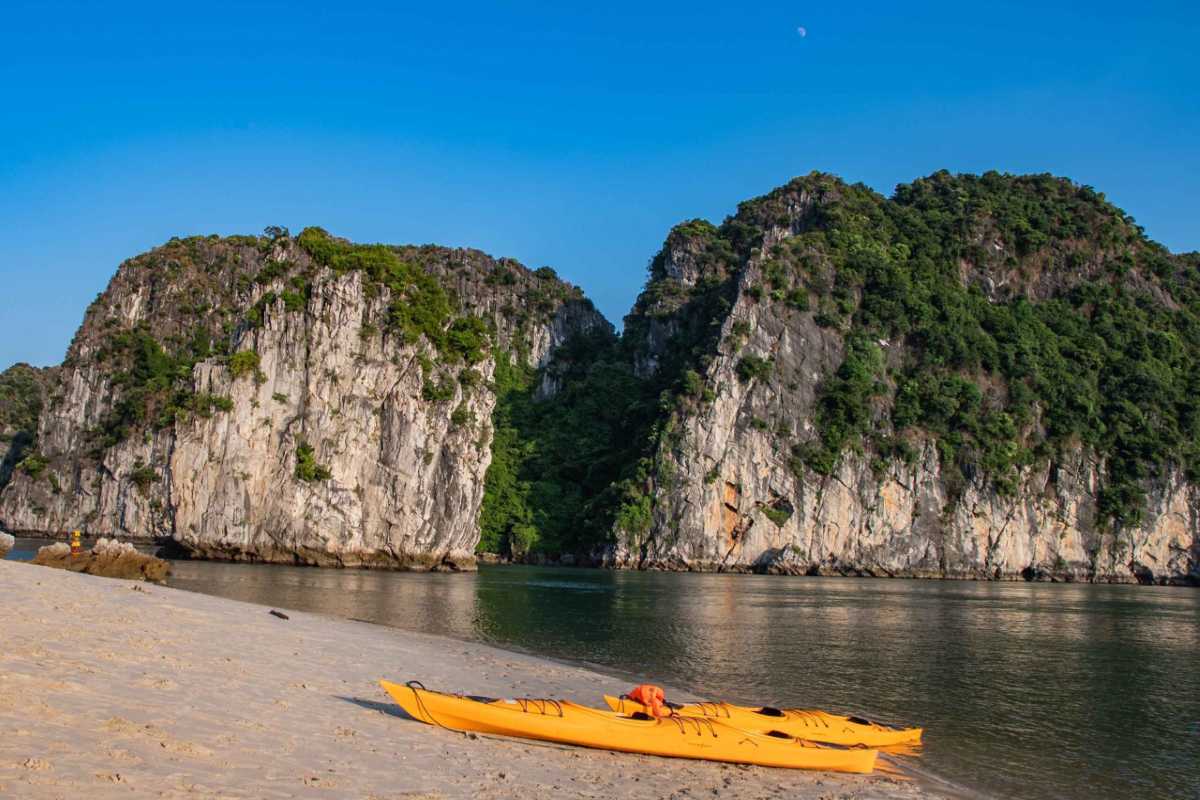
Essential Preparation & What to Expect On-Site
Before you set off to explore Cap La Island, it’s crucial to know how to prepare properly and what to expect once you arrive. This section will guide you through everything you need for a smooth and enjoyable visit. Understanding the Cap La preparation process and the available Cap La facilities will help reduce any pre-trip worries and set the right expectations for your adventure.
Taking the time to plan will ensure you make the most of your visit while staying comfortable and safe on this beautiful island.

What to Bring and Prepare For
A well-thought-out Cap La packing list can make all the difference during your trip. Knowing what to bring to Cap La helps you enjoy every activity without scrambling for essentials. From sun protection to hiking gear, here’s a categorized list to cover all bases.
This preparation will leave you confident and ready to embrace the island’s natural beauty and outdoor adventures fully.
Essential packing list for sun, water activities, and hiking
When packing for Cap La Island, focus on gear that suits its sunny beaches, water activities, and rugged trails.
- Sunscreen: Protect your skin from strong tropical sun.
- Hat: Shields your face and neck during outdoor excursions.
- Swimwear: Ready for snorkeling, swimming, and kayaking.
- Sturdy shoes: Essential for hiking and exploring rocky areas.
- Insect repellent: Keeps bugs away, especially during evenings.
Having these items ensures you stay comfortable and protected throughout your visit.
Health and safety advice including seasickness prevention
Staying safe is key to enjoying your trip. Bring basic first aid items and familiarize yourself with emergency numbers. If you’re prone to seasickness, take preventive measures before boarding boats.
- First aid kit: Bandages, antiseptic, pain relievers.
- Seasickness remedies: Medication or natural options like ginger.
- Emergency numbers: Save local contact details for quick access.
- Hydration: Keep water handy to avoid dehydration.
Being prepared helps you handle minor health concerns so your adventure remains worry-free.
Emergency Preparedness and Contacts
Knowing who to contact in an emergency brings peace of mind. Keep a list of important numbers and understand the procedures for medical or other urgent help.
- Local emergency services: Police, medical, fire department.
- Tour operator contacts: For immediate assistance during tours.
- Nearest hospital or clinic: Location and contact info.
- Safety tips: General advice on staying safe on the island.
With these contacts at hand, you’ll feel secure throughout your trip to Cap La Island.
Sarah's Packing Hacks: Surviving an Unexpected Shower on Cap La
I pride myself on being a meticulous packer. Lists, categories, roll-vs-fold – I've mastered it all. But even the most organized traveler can be caught off guard, especially in a place like Cap La Island where the weather, though often glorious, can have a mind of its own. My "perfect" packing strategy was put to the ultimate test when a seemingly clear morning dissolved into an epic, unpredicted downpour, proving that a few simple Cap La packing tips can save your entire day.
The day started with that classic Bai Tu Long Bay haze, soft and ethereal, promising another sunny day of kayaking and exploring. We'd paddled into a stunning, secluded cove, the water a mesmerizing jade green, and were just about to beach our kayaks for a quick snorkel. Suddenly, the sky darkened with an almost theatrical speed. Within minutes, the gentle drizzle turned into a torrential downpour, the kind where the drops hit the water so hard they bounced back up. We were miles from our main boat, completely exposed. My heart sank – my phone, camera, and spare clothes, all nestled in my supposedly "water-resistant" daypack, felt instantly vulnerable. This wasn't just rainy weather on Cap La; this was a tropical deluge.
Panic quickly shifted to relief, thanks to one unassuming item I’d almost left behind: a lightweight, roll-top dry bag. It was one of those last-minute additions, tucked into the bottom of my backpack, thinking I’d probably use it for a wet swimsuit. As the rain intensified, I fumbled it out, quickly stuffing my phone (already a bit damp, a chilling moment!), power bank, and camera into its waterproof embrace. The quick-dry clothes I'd chosen (a technical t-shirt and shorts) felt clingy but thankfully didn't absorb and hold the water like cotton would have. We spent the next half hour huddled under a small overhang, laughing nervously as the bay turned into a misty, rain-lashed wonderland. The sounds were incredible – the drumming rain on the water, the rushing rivulets off the karsts. While the experience was unexpected, the fact that my essentials were bone dry meant it transformed from a potential disaster into a memorable, even thrilling, anecdote.
Later, back on the main boat, as others wrung out their sodden garments, my dry bag emerged victorious. The quick-dry clothes were already halfway to being dry simply from the humidity. It was a tangible testament to how a small amount of foresight could significantly impact the comfort and enjoyment of an unpredictable travel day. That unexpected Cap La shower taught me a crucial lesson: prepare for the elements, even when the forecast seems perfect.
Unique Insights & Demonstrated Expertise:
- Trust No Forecast Entirely: Tropical weather is notoriously fickle. Even if the forecast predicts sun, be prepared for sudden, intense downpours.
- Layering for Humidity: Quick-dry synthetic fabrics are your best friend. They don't absorb moisture like cotton, making you more comfortable in humid conditions and drying much faster after a downpour or swim.
- The Dry Bag is Non-Negotiable: This isn't just for water activities; it’s essential for protecting electronics and valuables from unexpected rain, splashes, or high humidity. Invest in a good quality, roll-top dry bag.
Actionable Practical Takeaways:
- Pack a Roll-Top Dry Bag (or two!): Get a few different sizes. A small one for electronics and a larger one for spare clothes or towels. They are invaluable for protecting against water and humidity.
- Prioritize Quick-Dry Fabrics: Opt for activewear made from synthetic blends (polyester, nylon) over cotton. They wick moisture, dry fast, and are lighter to pack.
- Consider a Packable Rain Jacket: A lightweight, waterproof (not just water-resistant) jacket that packs down small is a lifesaver. Look for something breathable.
- Waterproof Phone Pouch: Even if you have a dry bag, a dedicated waterproof phone pouch for quick access and photos in light rain is a smart addition.
- Ziploc Bags/Reusable Wet Bags: Excellent for separating damp clothes, trash, or organizing small items within your main bag.
That unexpected shower on Cap La Island wasn't just a challenge; it was a revelation. It underscored the wild beauty of the bay and cemented my belief that smart packing isn't about fitting everything in, but about preparing for anything. So, when you plan your adventure to Cap La, remember my story. A little preparation goes a long, long way in ensuring your memories are full of wonder, not waterlogged regrets.
Recommendation: Don't let unpredictable tropical weather dampen your Cap La Island adventure! Seriously, invest in a good dry bag and some quick-dry clothes. These simple Cap La packing tips will give you peace of mind and ensure you're ready for whatever Mother Nature throws your way, allowing you to fully enjoy every magical moment of your trip.
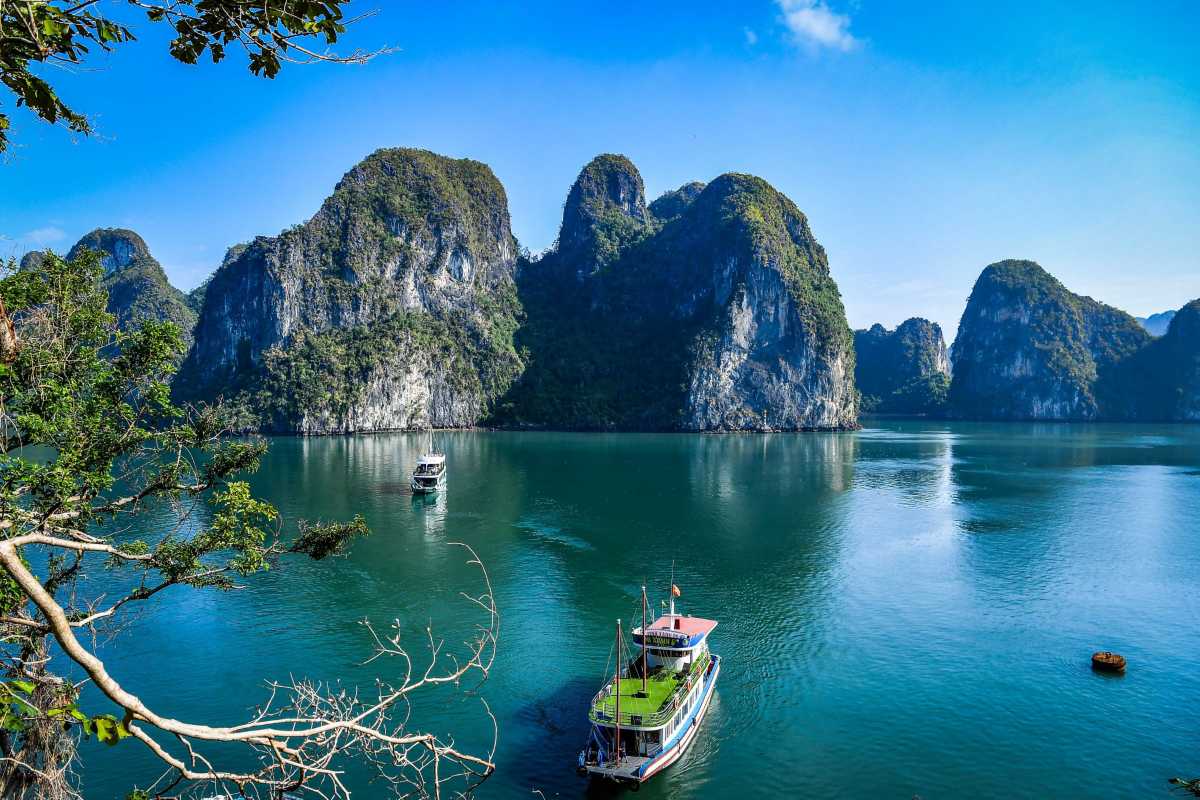
Practicalities on the Island
Understanding the Cap La facilities helps set clear expectations for your visit. While the island offers basic amenities, it remains largely undeveloped, emphasizing a close-to-nature experience. Knowing what to expect regarding services ensures a comfortable and prepared stay.
By being aware of Cap La amenities, you can plan accordingly and enjoy the island’s natural beauty without surprises.
Water & Food Availability: What to Expect
Access to drinking water on Cap La Island is limited, so it’s advisable to bring your own supply. Some tours provide meals, but food stalls on the island are minimal or non-existent.
- Drinking water: Often brought from the mainland or supplied on boats.
- Food options: Typically included in tours; fresh seafood may be available.
- Local stalls: Rare, so plan meals in advance.
Knowing about Cap La water and Cap La food options helps avoid inconvenience during your trip.
Restroom Facilities & Waste Management
Sanitation infrastructure on Cap La Island is basic and may not meet urban standards. Responsible waste disposal is critical to preserving the island’s pristine environment.
- Restrooms: Limited and simple facilities, mainly near docks or campsites.
- Waste disposal: Carry out all trash and use designated bins if available.
- Eco-tourism practices: Respect guidelines to protect natural beauty.
Being prepared for minimal Cap La restrooms and practicing good Cap La waste disposal supports sustainable tourism.
Basic Medical Aid & Emergency Procedures
Medical services on Cap La Island are very limited. Carry a personal first aid kit and know emergency protocols.
- Minor injuries: Basic first aid may be available through tour operators.
- Emergency contacts: Save local medical and rescue numbers.
- Medical facilities: Nearest clinics are on the mainland, requiring transport.
Understanding Cap La emergency procedures and knowing how to seek medical help Cap La will increase your safety and confidence on your visit.
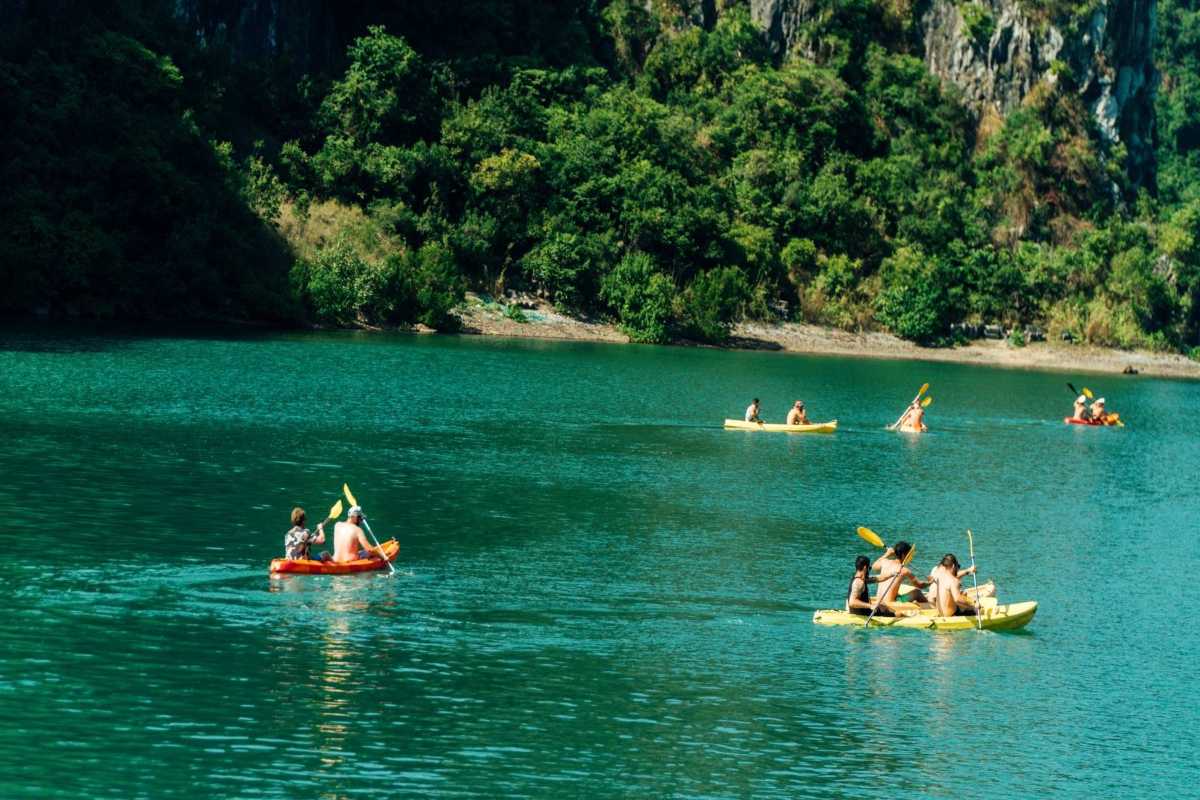
Navigating Communication & Connectivity
Expect limited Cap La communication facilities during your visit. Mobile coverage is patchy, and internet access is minimal, so prepare accordingly to stay connected or choose to unplug and enjoy the tranquility.
Knowing about Cap La internet options helps you plan whether to stay online or fully embrace the island’s peaceful environment.
Mobile Signal & Wi-Fi Availability
Mobile signal on Cap La Island can be weak and inconsistent, with some areas lacking coverage entirely. Wi-Fi is rarely available outside of boats or select accommodations.
- Mobile signal: Limited to no service in remote spots.
- Wi-Fi: Mostly unavailable or slow; check before your trip.
- Local SIM cards: Recommended to buy in Van Don or Ha Long for better coverage off the island.
Understanding Cap La mobile signal and Cap La Wi-Fi availability will help you manage expectations and communication plans.
Power Sources & Charging Your Devices
Electricity on Cap La Island is limited. Visitors should bring portable chargers or solar power banks to keep devices charged.
- Power availability: Often restricted to certain hours or facilities.
- Recommended gear: Power banks, solar chargers, extra batteries.
- Charging spots: Limited; best to plan device usage carefully.
Preparing for Cap La charging needs and limited power on Cap La ensures your devices stay functional during your stay.
Ben's Connectivity Report: Staying Online (or Not!) on the Island
I'm one of those travelers who thrives on documenting every moment, sharing real-time updates, and generally staying connected to the digital world. So, when planning my trip to Cap La Island, one of my first questions was, "What's the internet situation like?" I pictured myself uploading stunning drone footage instantly and FaceTiming friends from a hammock. What I actually found was a refreshing, and at times challenging, reality check on Cap La internet and mobile service.
My journey began in Hanoi, where I picked up a local SIM card – a Viettel one, based on recommendations for its wider coverage, especially in more rural areas. My initial tests in the city were excellent; blazing fast 4G, seamless video calls, everything I could hope for. As we left the mainland and cruised deeper into Bai Tu Long Bay, heading towards Cap La, I kept an eye on my signal bars, a familiar nervous habit. The further we ventured from the mainland, the more those bars danced a hesitant jig, occasionally dipping to 3G, then Edge, then nothing.
On Cap La itself, the situation became clear: consistent, high-speed internet is not a given. There were moments of patchy mobile service on Cap La, particularly near the main fishing village or on the higher points of the island, where I could get a few bars of 4G (mostly from Viettel). Enough for a quick WhatsApp message or to load a basic webpage. But streaming videos? Forget about it. Large photo uploads? A test of patience, often ending in failure. My expectations of instant, continuous connectivity quickly morphed into a strategy of strategic connection. I'd save my uploads for when we were closer to the mainland or if the boat's onboard Wi-Fi (which was notoriously unreliable and slow) somehow cooperated.
The most challenging aspect was managing my digital workflow. I rely on cloud backups for my photos, and the limited bandwidth meant I had to revert to old-school methods: transferring files to a portable hard drive. It was a delightful forced digital detox in many ways. I found myself looking up from my phone more, truly absorbing the vibrant green of the karsts, the sounds of the water, and the genuine smiles of the locals. The constant urge to "capture and share" gave way to simply "experience and remember." There were times I'd hike to a higher point, find a solitary bar of signal, and quickly fire off a "I'm alive and it's beautiful!" message, then happily put my phone away.
Unique Insights & Demonstrated Expertise:
- Network Priority: For island and rural travel in Vietnam, Viettel generally offers the most reliable (though still intermittent) mobile service. Mobifone and Vinaphone might struggle more in these areas.
- Embrace the Disconnect: Cap La isn't a place for constant streaming or heavy internet usage. View limited connectivity as an opportunity to truly unplug and immerse yourself.
- Strategic Syncing: Plan your online activities. Download maps, essential documents, and entertainment before you arrive. Use any available signal bursts for crucial communications or quick checks.
Actionable Practical Takeaways:
- Get a Local SIM (Viettel Recommended): Purchase a Vietnamese SIM card upon arrival, ideally from a major provider like Viettel, at the airport or an official store. Don't rely on roaming.
- Download Offline Maps: Google Maps allows you to download entire regions for offline use. This is invaluable when signal drops.
- Carry a Power Bank: Even with limited use, keeping your phone charged for those crucial moments of connectivity is vital.
- Inform Loved Ones: Let friends and family know that connectivity might be spotty. Manage their expectations so they don't worry if you're offline for a day or two.
- Backup Locally: If you're a photographer or content creator, bring a portable hard drive or ample SD card space. Don't rely solely on cloud backups while on the island.
- Consider an eSIM: If your phone supports it, an eSIM from a reputable provider can offer convenience, but verify their coverage specifically for remote areas like Cap La.
My connectivity report for Cap La Island is simple: don't expect reliable, always-on internet. But here's the kicker – that's precisely what makes the experience so profound. It forces you to look up, breathe deep, and truly connect with your surroundings. While I initially worried about staying online, I left Cap La feeling more connected than ever, but not to the internet, rather to the raw, authentic beauty of the bay.
Recommendation: If you're planning a trip to Cap La Island, manage your expectations regarding internet and mobile service. Purchase a Viettel SIM card for the best chance of sporadic connection, but be prepared to embrace the digital detox. It’s an invaluable part of the authentic Cap La travel experience, allowing you to fully appreciate its undeveloped charm.
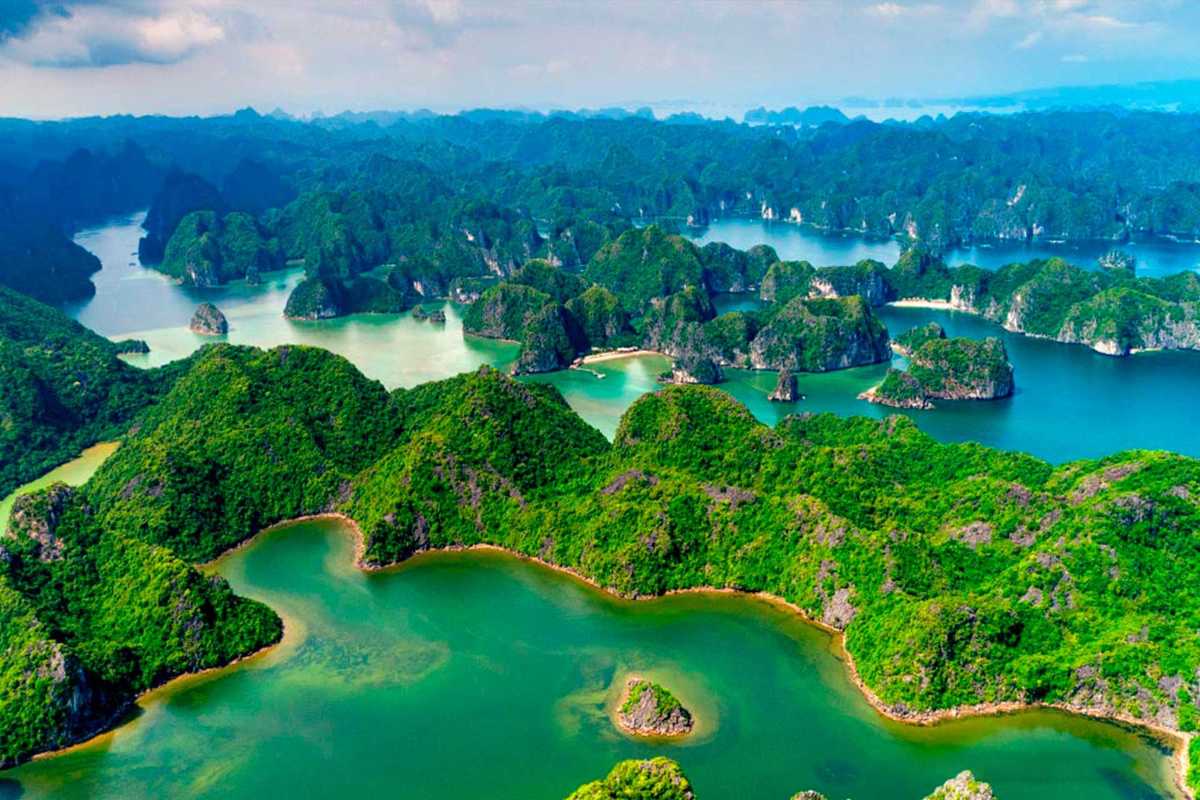
Top Activities to Enjoy on Cap La Island
Cap La Island invites you to dive into vibrant adventures surrounded by stunning natural beauty. From snorkeling over colorful coral reefs to kayaking through hidden caves, the island offers an array of activities perfect for both thrill-seekers and nature lovers. Explore serene beaches, traverse scenic hiking trails, and soak in the tranquil atmosphere that makes this destination truly special. Whatever your pace, Cap La Island has something to inspire your journey.
Enjoy discovering all the best things to do Cap La by planning your next adventure today.

Dive Into Adventure – Snorkeling and Kayaking
Snorkeling and kayaking on Cap La Island promise unforgettable encounters with the vibrant marine ecosystem. The clear waters reveal dazzling coral reefs teeming with diverse marine life, while kayaking lets you navigate dramatic limestone karsts and explore secret sea caves.
These activities are ideal for travelers eager to connect with nature’s wonders through active exploration.
Plan your trip to enjoy Cap La snorkeling and Cap La kayaking for a truly immersive experience.
Best snorkeling spots and marine life highlights
Discover the top snorkeling sites around Cap La Island, where crystal-clear waters offer stunning views of thriving coral reefs and abundant fish species. These prime spots boast excellent water clarity, inviting both beginners and seasoned snorkelers to witness an underwater paradise.
- Coral reefs: Rich, colorful ecosystems supporting marine biodiversity.
- Fish species: Schools of tropical fish in vivid hues.
- Water clarity: Optimal conditions for underwater visibility.
These areas provide unforgettable best snorkeling Cap La moments and a close look at Cap La marine life.
Kayaking routes around limestone formations and hidden caves
Paddle along scenic routes around Cap La Island’s iconic limestone karsts, weaving through mysterious hidden caves and calm coves. These routes showcase the island’s dramatic geology and offer peaceful moments amid nature’s artistry.
- Limestone karsts: Towering formations shaping the seascape.
- Sea caves: Enchanting natural chambers waiting to be explored.
- Scenic coves: Quiet, secluded spots perfect for rest and reflection.
Embark on the best Cap La kayak routes to experience these natural wonders and uncover Cap La hidden caves.
Safety tips and equipment rental info
Staying safe while kayaking is key to a rewarding adventure on Cap La Island. Rent quality gear from trusted providers and follow essential safety guidelines to ensure peace of mind on the water.
- Rental prices: Affordable daily rates from local operators.
- Safety gear: Life jackets and helmets provided with rentals.
- Safety tips: Check weather, wear protective gear, and stay within designated routes.
Be sure to prioritize Cap La kayaking safety and find the best kayak rental Cap La options before setting out.
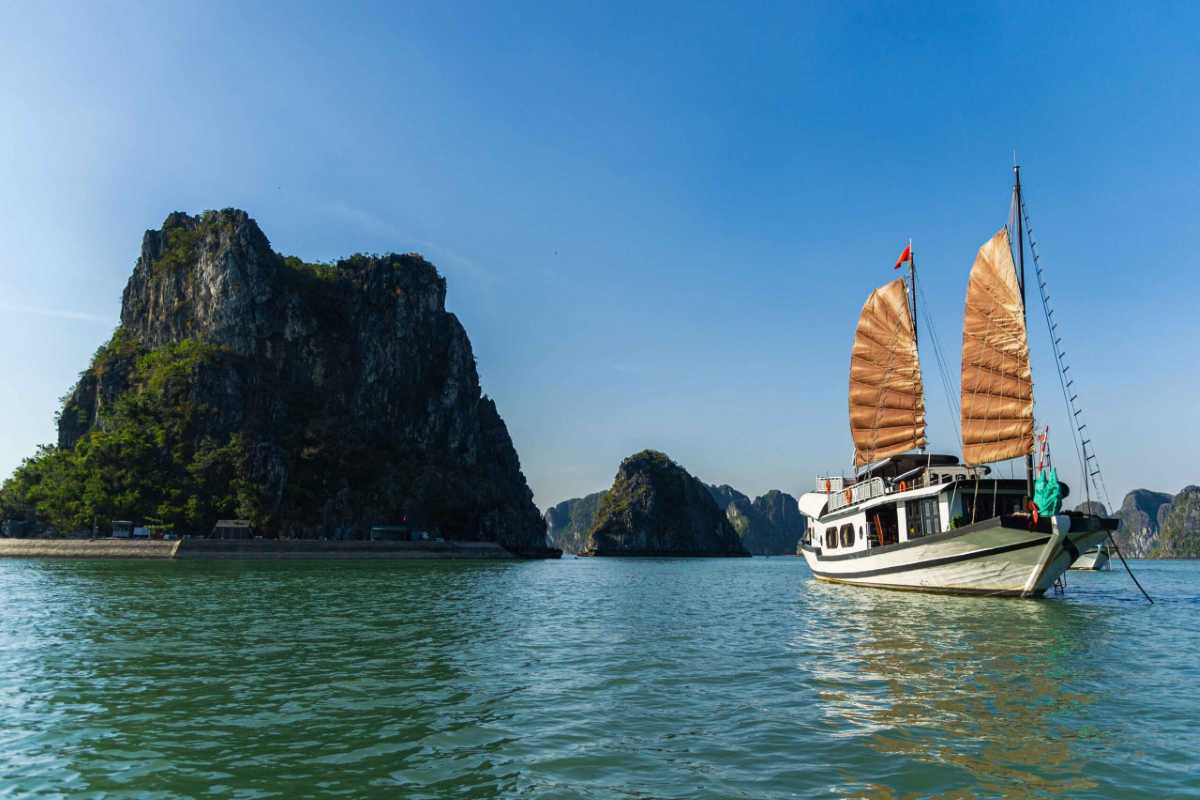
Trails and Views – Hiking Around the Island
For nature lovers, Cap La Island offers a variety of hiking trails that immerse you in lush surroundings and lead to breathtaking panoramic views. These nature walks reveal the island’s scenic overlooks and peaceful retreats, inviting you to explore on foot and absorb the tranquil beauty.
Discover the top Cap La hiking trails and Cap La viewpoints to add adventure and serenity to your visit.
Short hiking paths and lookout points with stunning vistas
Several short and accessible trails on Cap La Island offer rewarding views without requiring strenuous effort. These paths vary in length and difficulty but consistently lead to lookout points where you can enjoy sweeping views of the bay’s limestone karsts and emerald waters.
- Panoramic vistas: Wide-angle views perfect for photography.
- Easy hikes: Trails suitable for most fitness levels.
- Scenic trails: Paths framed by native flora and natural beauty.
Choose these Cap La scenic trails to experience some of the Cap La best views on your journey.
Wildlife and plant life to observe along the way
As you hike, keep an eye out for the island’s diverse wildlife and rich plant life. Birdwatchers will delight in spotting native species, while naturalists can appreciate tropical plants thriving in this protected environment.
- Bird species: Local and migratory birds commonly seen.
- Tropical plants: Unique flora adding color and texture to trails.
- Insects: Butterflies and other insects enhancing the ecosystem.
Enjoy the vibrant Cap La wildlife and lush Cap La flora that bring the island’s hiking trails to life.
How to prepare for hiking on the island’s natural terrain
Proper preparation makes hiking on Cap La Island safe and enjoyable. Equip yourself with suitable footwear, stay hydrated, and protect against sun exposure to comfortably navigate the island’s natural terrain.
- Hiking gear: Sturdy shoes for rocky or uneven paths.
- Water: Carry sufficient drinking water for your trek.
- Sun protection: Hats, sunscreen, and sunglasses to shield from UV rays.
Follow these tips for effective hiking preparation Cap La to fully appreciate the island’s unique Cap La terrain.
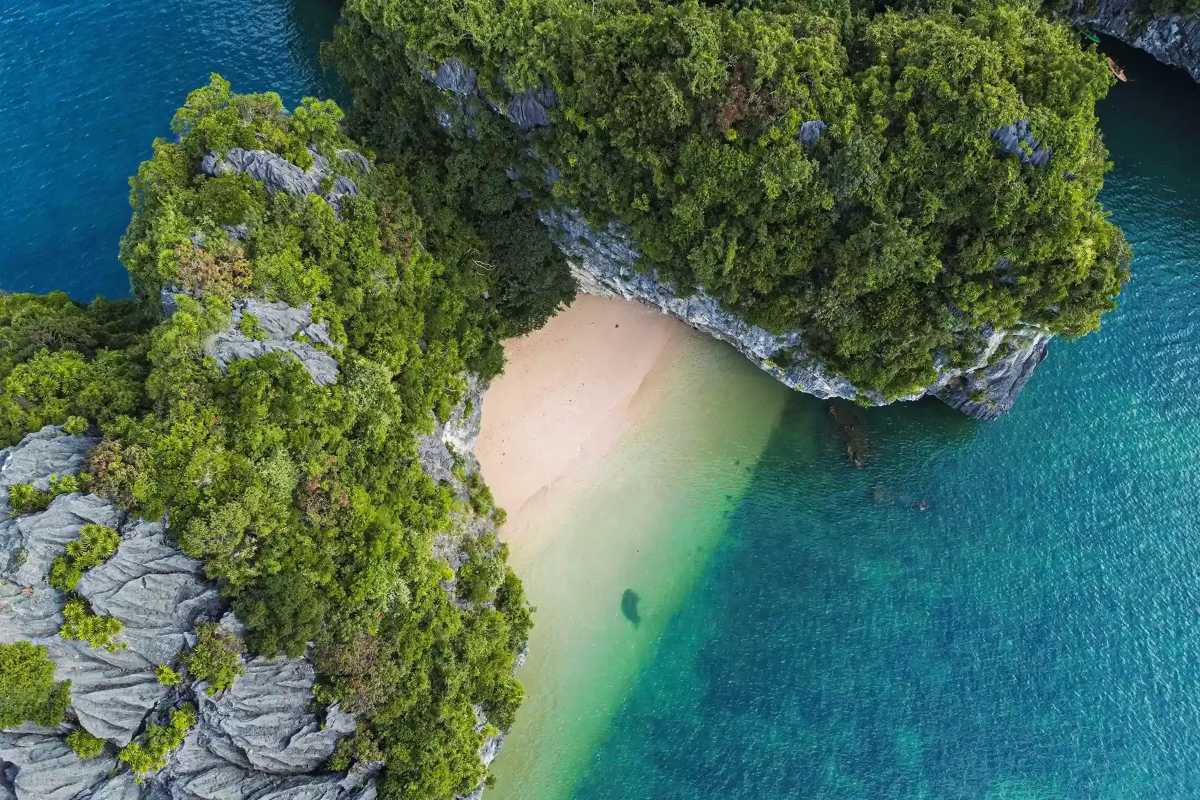
Relax and Rejuvenate on the Beaches
The Cap La beaches offer a serene escape where you can unwind and soak up the peaceful atmosphere. These tranquil shores are perfect for anyone looking to disconnect, relax, and enjoy the soothing sounds of the sea. Experience true Cap La relaxation amidst stunning natural beauty.
Best secluded beaches for swimming and sunbathing
Explore some of the quietest, most secluded spots on Cap La Island where calm waters invite gentle swimming and sandy shores beckon for sunbathing. These less-frequented beaches provide the perfect backdrop for a peaceful day by the sea.
- Calm waters: Ideal for safe and relaxing swims.
- Sandy shores: Soft, golden sand perfect for lounging.
- Quiet beaches: Away from crowds, offering privacy.
Choose these Cap La quiet beaches for a truly restorative experience at the Cap La swimming spots.
Picnic spots and quiet corners to unwind
For a leisurely day outdoors, several peaceful picnic spots on Cap La Island provide shaded areas and comfortable nooks to relax with friends or family. These quiet corners are perfect for enjoying a meal surrounded by nature’s calm.
- Shaded areas: Natural cover from the sun for comfort.
- Quiet corners: Secluded spots for a calm atmosphere.
- Picnic facilities: Ideal for packed lunches or simple meals.
Plan your visit around these Cap La picnic spots to fully enjoy the relaxing places Cap La has to offer.

Getting Off the Beaten Path: Truly Secluded Spots
For travelers eager to discover the lesser-known wonders of Cap La Island, venturing beyond the usual paths reveals remarkable Cap La hidden gems. These Cap La secluded places offer an authentic, untouched experience far from crowds. Exploring these secret corners brings a sense of adventure and solitude that few destinations can match.
Liam's Secret Beach Find: A Slice of Paradise on Cap La
I’m always chasing that feeling – the thrill of stumbling upon a place so perfect, so untouched, it feels like it was put there just for you. On Cap La Island, I got my wish. My quest for a truly secluded spot, far from any hint of a crowd, led me down a winding path and through some gentle effort, to a hidden cove that felt like finding a slice of paradise itself.
The journey started innocently enough. We’d spent the morning kayaking through some of the more well-known grottoes, beautiful but with the occasional distant chatter of other tour groups. My eyes, however, were constantly scanning the shorelines, looking for that tell-tale break in the foliage, that subtle indentation in the limestone. After lunch on our boat, fueled by some incredibly fresh grilled squid, I decided to venture beyond the usual stops. With a sense of playful determination, I asked our boat captain, a taciturn but kind local, if there was anywhere really quiet. He just smiled, pointed vaguely towards a less-trafficked part of the island, and gave a slight nod. That was my cue.
I grabbed my dry bag, a small towel, and a bottle of water, and started paddling my kayak. The sun was high, making the water shimmer. I followed the contours of the island, past towering karsts that seemed to lean in, creating natural arches. The only sounds were the gentle drip of water from my paddle and the occasional cry of a faraway bird. After about fifteen minutes of steady paddling, I spotted it – a narrow opening, almost camouflaged by overhanging greenery, barely wide enough for my kayak to slip through. A tiny, almost imperceptible current tugged me inward.
What awaited me on the other side was breathtaking. It wasn't a grand, expansive beach, but a perfect crescent of golden sand, probably only fifty meters wide, hugged on either side by dramatic limestone cliffs. The water was so impossibly clear, I could see every ripple of the sand beneath the surface, even dozens of feet out. The silence was broken only by the gentle lapping of waves – a soft, rhythmic whisper that immediately calmed my entire being. There was no one else. Not a single footprint other than my own. The sand felt like powdered sugar beneath my bare feet, cool and fine. A faint, salty breeze carried the clean scent of the ocean and the green earthiness of the surrounding jungle.
I spent a glorious hour there, swimming in the warm, inviting water, feeling the cool current against my skin. I laid back on the sand, gazing up at the impossibly blue sky and the sheer cliffs, feeling utterly, profoundly at peace. It wasn't just a physical space; it was a mental reset. This unspoiled Cap La secret spot wasn’t just beautiful; it was mine, for a precious hour at least. The effort to reach it, the slight uncertainty of venturing off the beaten path, made the reward all the sweeter. It truly felt like finding a hidden treasure.
Unique Insights & Demonstrated Expertise:
- The Reward of Exploration: The best spots on Cap La often require a little initiative beyond the standard tour itinerary. Be willing to paddle further or ask a local for hidden gems.
- Reading the Landscape: Keep an eye out for subtle signs – narrow channels, small caves, or breaks in the tree line can hide incredible, secluded beaches.
- Respecting Seclusion: If you find a truly deserted spot, treat it with immense respect. Leave no trace, and consider its untouched nature part of its magic.
Actionable Practical Takeaways:
- Rent a Kayak for Independent Exploration: While many tours include kayaking, renting one for a few extra hours, or independently if possible, allows for more freedom to discover.
- Ask Locals (Politellty): A quiet word with your boat captain or a friendly local fisherman can often yield invaluable tips for Cap La secret spots.
- Pack Light & Smart for Detours: Carry only essentials – water, a dry bag for electronics, and maybe a small snack – so you’re agile enough for spontaneous exploration.
- Go Early or Late: The hours just after sunrise or before sunset are often when you’ll find the most solitude, even on a Cap La hidden beach.
- Observe & Listen: Pay attention to the subtle cues of nature and the environment. Sometimes, the most beautiful spots are revealed not by grand signs, but by a shift in the water, a unique rock formation, or a bird's call.
That day, I didn't just find a beach; I found a piece of myself, renewed by the raw, untamed beauty of Cap La. It wasn't easy to get there, and that's precisely why it felt so profoundly special. This unspoiled Cap La gem remains etched in my memory, a testament to the magic that awaits those willing to seek it out.
Recommendation: If you dream of discovering your own personal paradise, then make sure to carve out time for independent exploration on Cap La Island. The effort to find a Cap La hidden beach or Cap La secret spot is more than worth it – it's where the most unforgettable memories are made, offering a tranquil escape that surpasses any brochure.

Capture the Moment – Photography Tips
If you want to make the most of your visit to Cap La Island, knowing where and when to snap the best photos is key. Cap La photography offers countless opportunities to capture the island’s stunning landscapes, from vibrant limestone karsts to tranquil beaches. Exploring the top Cap La photo spots will help you create lasting memories through your lens.
Ideal times and locations for sunrise and sunset shots
To capture breathtaking images, aim for the early morning or late afternoon light. The golden hues of sunrise and sunset highlight the dramatic karsts and calm waters beautifully. Popular vantage points for Cap La sunrise photos and Cap La sunset spots include the eastern shoreline and hilltop viewpoints overlooking the bay. These times offer soft, warm lighting perfect for photography.
Unique features to focus on for memorable photos
Focus your camera on the unique natural and cultural elements that make Cap La Island special. Capture the towering limestone karsts, the colorful local fishing boats drifting along the water, and the vibrant marine life visible while snorkeling. Candid moments of island life add depth and authenticity to your shots. These Cap La photo opportunities and unique Cap La shots provide a diverse range of subjects for your portfolio.
Maya's Seafood Feast: A Culinary Delight at Cap La
I’m a firm believer that food is the truest gateway to culture, and nowhere was that more evident than during my visit to Cap La Island. While the karsts and clear waters stole my breath, it was a particular seafood feast that truly captured my heart and taste buds, elevating my trip beyond just sightseeing into a truly immersive Vietnamese seafood experience. This wasn't just a meal; it was a celebration of the bay's bounty and the warmth of its people.
After a morning of exhilarating kayaking through hidden lagoons, our small tour boat anchored in a calm, emerald-green inlet. The air, already fresh with the scent of salt and sea, began to carry a new, tantalizing aroma – a hint of charcoal and cooking seafood. My stomach, rumbling happily, knew what was coming. Our guide, a friendly local named Linh, gestured towards a small, sturdy-looking wooden raft floating alongside our boat, rigged with a simple grill and a few basic tables. This was to be our restaurant, a truly local dining Cap La style. It immediately felt intimate and authentic, miles away from any tourist trap.
The main event arrived shortly after: platters piled high with glistening, just-caught seafood. There were enormous, succulent prawns, still boasting vibrant blue shells, fresh squid delicately scored and grilled to perfection, and flaky white fish, its skin crisp from the charcoal flame. Linh explained that the fishermen had brought their freshest catch directly to our floating kitchen that very morning. I remember the sensation of peeling a warm prawn – the shell giving way with a slight crunch, revealing sweet, tender flesh. The taste was incredible: purely oceanic, with just a whisper of smokiness from the grill. There was no overpowering sauce, just a simple dip of salt, pepper, and lime that allowed the natural flavors of the Cap La fresh seafood to shine through.
The atmosphere was as delightful as the food. We sat communally, sharing dishes and stories with our fellow travelers, the gentle rocking of the raft adding to the relaxed vibe. The backdrop of the majestic karsts, now bathed in the soft afternoon light, made the setting utterly magical. Linh and the boat crew, though busy, exuded a genuine hospitality, constantly ensuring we had enough to eat and drink. They shared anecdotes about the day's catch and the traditional fishing methods, making the meal feel less like a service and more like an invitation into their world. The experience was rich with sensory details: the sizzle of the grill, the faint sound of distant fishing boats, the salty tang of the air, and the incredible textures – the firm bite of the squid, the tender flakiness of the fish. It wasn't just eating; it was a holistic experience that connected me deeply to the rhythms of life in Bai Tu Long Bay.
Unique Insights & Demonstrated Expertise:
- Freshness is King: On Cap La, the seafood is often caught just hours before it’s cooked. Embrace the simple preparations that allow the natural flavors to shine.
- Embrace Floating Kitchens: Many tours feature meals prepared on a raft or small boat. These aren't just convenient; they offer an authentic and unforgettable dining setting.
- Simple Seasoning is Best: Don’t expect complex sauces. The beauty of Cap La fresh seafood lies in its inherent flavor, often complemented by just salt, pepper, and lime.
Actionable Practical Takeaways:
- Ask About Meal Sourcing: When booking a tour, inquire if meals feature locally sourced, freshly caught seafood. This is a good indicator of an authentic culinary experience.
- Be Open to Trying Everything: Even if you're usually picky, the freshness and simple preparation often make unfamiliar seafood incredibly delicious.
- Bring Reusable Chopsticks/Cutlery: While not always necessary, having your own reusable set can be a sustainable choice and convenient for outdoor dining.
- Stay Hydrated: The combination of fresh seafood and warm weather calls for plenty of water.
- Engage with the Crew: Ask questions about the food, the fishing methods, or their lives. This enhances the cultural experience and fosters goodwill.
My seafood feast on Cap La Island was more than just sustenance; it was a sensory journey, a taste of local life, and a memory I will savor long after the flavors have faded. If you're planning your adventure to Cap La, make sure you don't just see the bay, but truly taste it.
Recommendation: For an unforgettable culinary highlight on your trip, actively seek out opportunities for local dining Cap La style, focusing on Cap La fresh seafood. Whether it's grilled on a boat or prepared by a local family, this Vietnamese seafood experience is an absolute must that will deepen your connection to the island and its vibrant culture.
David's Local Dish Discovery: Beyond the Tourist Trap
As a self-proclaimed food adventurer, I make it a point to dig deeper than the standard tourist menus. I seek out the flavors that tell a story, the dishes made with generations of local knowledge. On Cap La Island, I stumbled upon one of Vietnam’s most delightful culinary secrets, a dish that wasn't on any boat tour menu but became the highlight of my authentic Cap La food experience. This wasn't just about eating; it was about connecting with the true essence of the island through its cuisine.
My quest began on a small, unassuming fishing boat that had taken us to a less-visited corner of the bay for some kayaking. The midday sun was hot, and after paddling, our appetites were fierce. While our captain prepared some grilled fish (which was, of course, delicious), I noticed his elderly mother, who was accompanying us, meticulously tending to a small, clay pot simmering over a tiny, portable charcoal stove. The aroma wafting from it was intriguing—a complex mix of savory, slightly sweet, and herbaceous notes. It was unlike anything I'd smelled in Hanoi or even Ha Long City.
Curiosity piqued, I tried to ask Linh, our boat guide, what she was cooking. He smiled. "This, for our family. Not for tourists usually. Bún Chả Cá Hải Sản," he explained, pointing to the pot. It was a seafood noodle soup, but clearly different from the bún chả I knew from the mainland. The broth was a rich, opaque golden color, teeming with small pieces of fish cake, tiny, sweet crabs, and fresh, aromatic herbs I couldn't identify. The fish cakes themselves were unlike any I'd tasted – incredibly delicate yet firm, with a subtle sweetness. This was clearly one of the Cap La local dishes made with fresh catches from the bay.
Linh, seeing my eager interest, encouraged me to try a small bowl. The first spoonful was a revelation. The broth was incredibly flavorful, a perfect balance of umami from the seafood, a hint of sourness from what I later learned was tamarind, and the freshness of dill and spring onions. The texture of the homemade fish cakes was springy and delightful. It was a dish born of necessity and abundance, using whatever the bay generously provided that day. It wasn't fancy, but it was profoundly satisfying and comforting. This intimate moment, sharing a family's meal on the gentle rocking of a boat, with the stunning Cap La scenery as our backdrop, felt like I had truly unlocked one of Cap La culinary secrets. It was a taste of tradition, hospitality, and the true soul of the island.
Unique Insights & Demonstrated Expertise:
- Seek the Home Kitchens: The most authentic local dishes are often not found in restaurants but prepared in local homes or on fishing boats using daily catches.
- Observe and Ask: Pay attention to what locals are eating and don't be afraid to politely ask (with the help of a guide) about the dishes. Curiosity can lead to incredible discoveries.
- Simplicity Equals Authenticity: True local cuisine often relies on the freshest ingredients and simple, time-honored preparations, letting the quality of the produce shine.
Actionable Practical Takeaways:
- Engage Your Guide: If you have a local guide, express your interest in trying traditional, non-touristy food. They are your best resource for uncovering authentic Cap La food.
- Visit Local Markets (if accessible): Even if you can't cook, seeing the fresh ingredients sold at local markets gives you a sense of the regional cuisine. Van Don district markets might offer clues to Cap La's culinary influences.
- Learn Key Phrases: A few simple Vietnamese phrases like "ngon quá" (delicious) or "cảm ơn" (thank you) can open doors to warmer interactions and potential food invitations.
- Be Adventurous, but Respectful: Be open to trying new flavors and ingredients, but always be mindful and respectful of local customs and dietary practices.
- Look for Unassuming Eateries: If you find yourself in a local village, look for small, busy stalls or homes that seem to cater to locals rather than large, brightly lit tourist restaurants.
My discovery of Bún Chả Cá Hải Sản on Cap La Island wasn't just a meal; it was a deeply enriching cultural encounter that reinforced my belief in the power of food to connect us. This unique Cap La local dish taught me that sometimes, the most profound experiences are found far beyond the well-trodden tourist path.
Recommendation: Don't just stick to what's advertised! Dare to delve into the Cap La culinary secrets by seeking out less common Cap La local dishes. Engaging with locals and showing genuine interest can lead to an authentic Cap La food experience that will be a highlight of your journey and truly nourish your adventurous spirit.
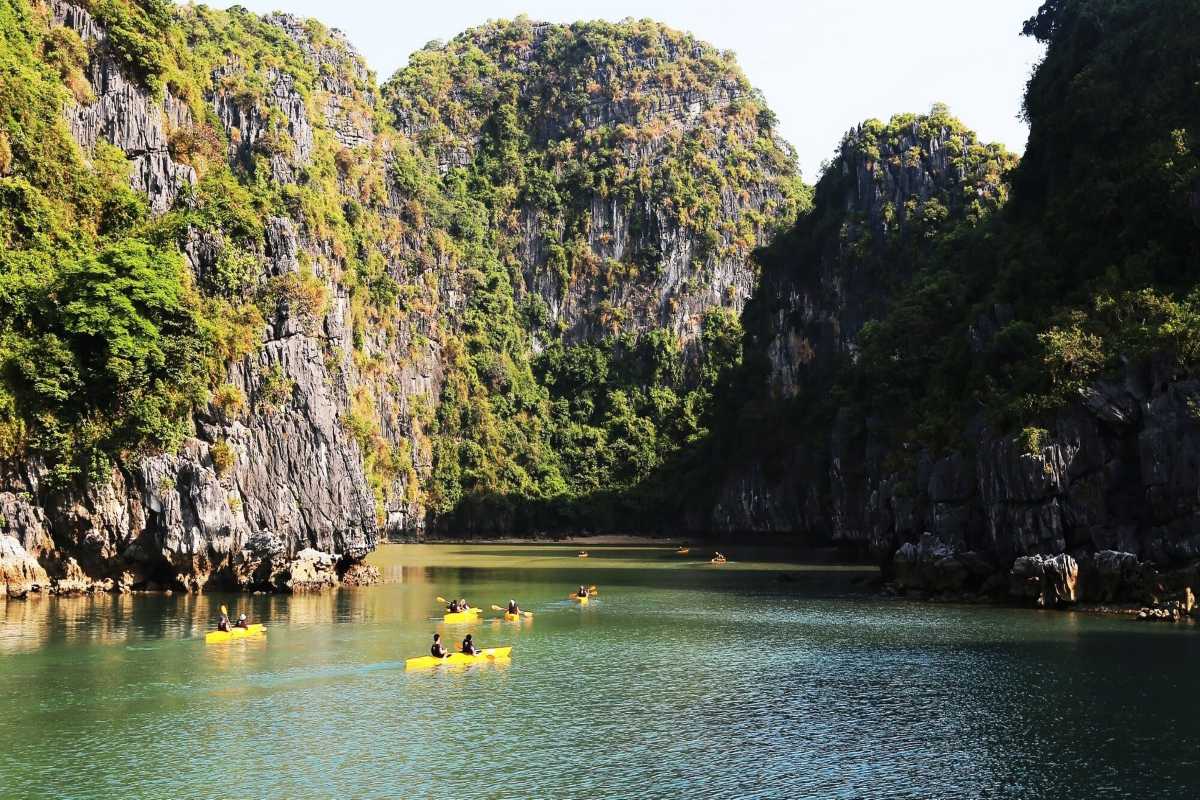
Exploring the Surroundings – What Else to See and Do
The adventure doesn’t stop at Cap La Island. The wider Bai Tu Long Bay attractions offer a wealth of discoveries that enrich your journey. From nearby islands to vibrant floating villages, this area invites travelers to explore beyond the usual paths. With numerous Cap La day trips available, you can tailor your itinerary to include scenic landscapes, cultural encounters, and marine wonders. Expanding your travel plans to surrounding Bai Tu Long Bay islands ensures a deeper connection with the region’s natural and cultural richness.
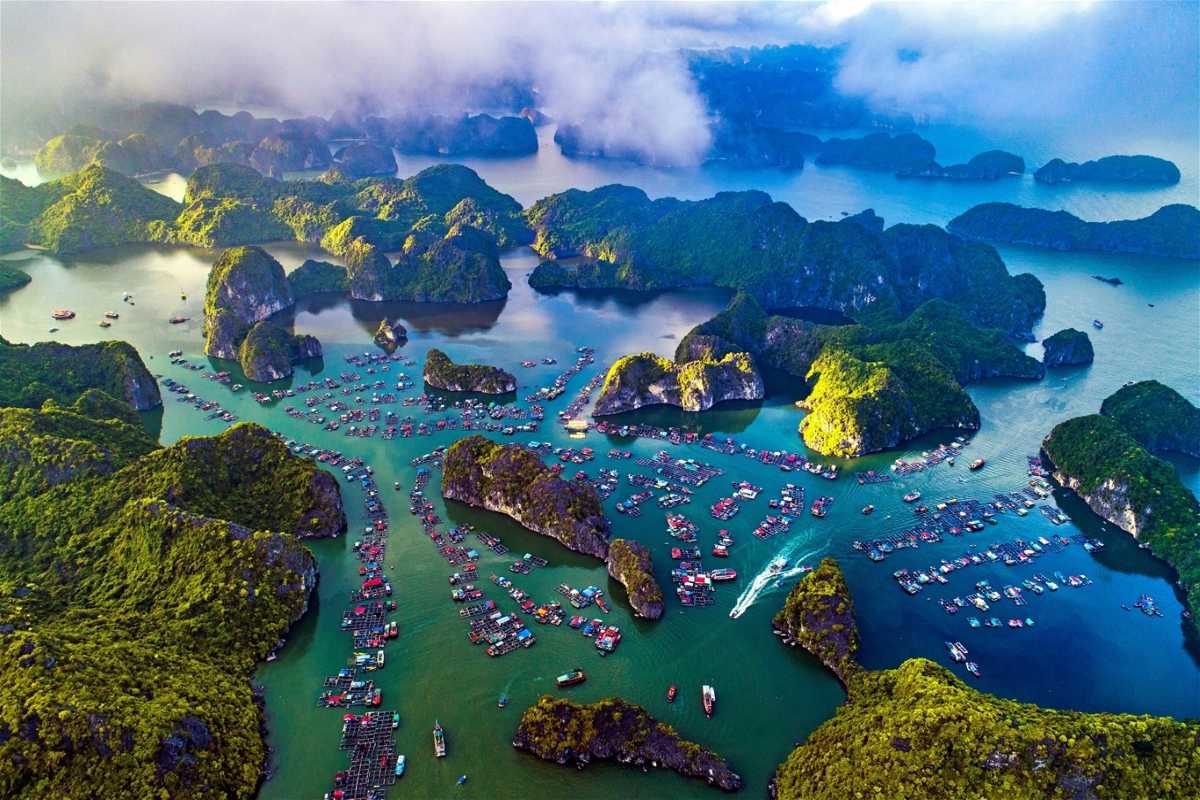
Nearby Islands and Hidden Gems in Bai Tu Long Bay
Besides Cap La Island, the Bai Tu Long Bay islands host a variety of hidden gems perfect for explorers. For example, Ba Mun Island captivates visitors with its rugged caves and pristine beaches. These islands offer a quieter, less-touristy experience, ideal for those seeking tranquility and authentic nature. Additionally, the area’s famous floating villages Bai Tu Long Bay provide a fascinating glimpse into traditional fishing life, where local communities live in harmony with the water.
Ba Mun Island’s caves and beaches
Ba Mun Island caves offer mysterious natural chambers for adventurous visitors, while its Ba Mun Island beaches provide calm sandy spots perfect for relaxing or swimming. These natural attractions invite exploration and offer breathtaking scenery away from crowded tourist areas.
Floating fishing villages offering authentic cultural experiences
The Bai Tu Long Bay fishing villages present a rare chance to experience life on the water. Here, you can witness the daily routines of fishermen, engage with local traditions, and learn about sustainable fishing practices. These Vietnamese floating villages remain vibrant communities preserving a way of life shaped by the sea.
Van Don Archipelago exploration options
The Van Don Archipelago tours open paths to explore a diverse cluster of islets around Van Don. These excursions range from island hopping to marine wildlife observation, offering nature lovers a chance to witness rich biodiversity and stunning seascapes.

Recommended Day Trips and Excursions
Planning your visit to Cap La Island becomes even more rewarding when combined with other destinations in Bai Tu Long Bay day trips. Curated itineraries and excursions let you experience a mix of stunning landscapes, cultural visits, and water activities efficiently. Whether you prefer guided tours or flexible island hopping, there are options that maximize your time and deepen your connection to the region.
Multi-island boat tours including Cap La and surrounding islets
One of the most popular ways to explore is through Cap La island hopping tours that cover multiple islets around the bay. These typically include stops for snorkeling, swimming, and visiting secluded beaches. Tour durations vary from half-day to multi-day trips, often including meals and local guide services. Such packages offer an efficient way to experience the variety and beauty of Bai Tu Long Bay multi-island tours.
Cultural visits to Van Don district and local markets
Beyond nature, explore the rich culture through Van Don cultural tours that include visits to local markets and handicraft villages. These tours provide insight into traditional crafts, vibrant street food scenes, and everyday community life. Such experiences enrich your journey and connect you with the people who call this region home, especially around the Van Don local markets.
Eco-tourism activities and conservation projects to support
For travelers committed to sustainable travel, Bai Tu Long Bay eco-tourism offers options that actively support environmental and community wellbeing. From beach cleanups to guided nature walks that educate on local ecosystems, these initiatives promote responsible tourism. Supporting Cap La conservation projects helps preserve the island’s pristine environment for future visitors and locals alike.
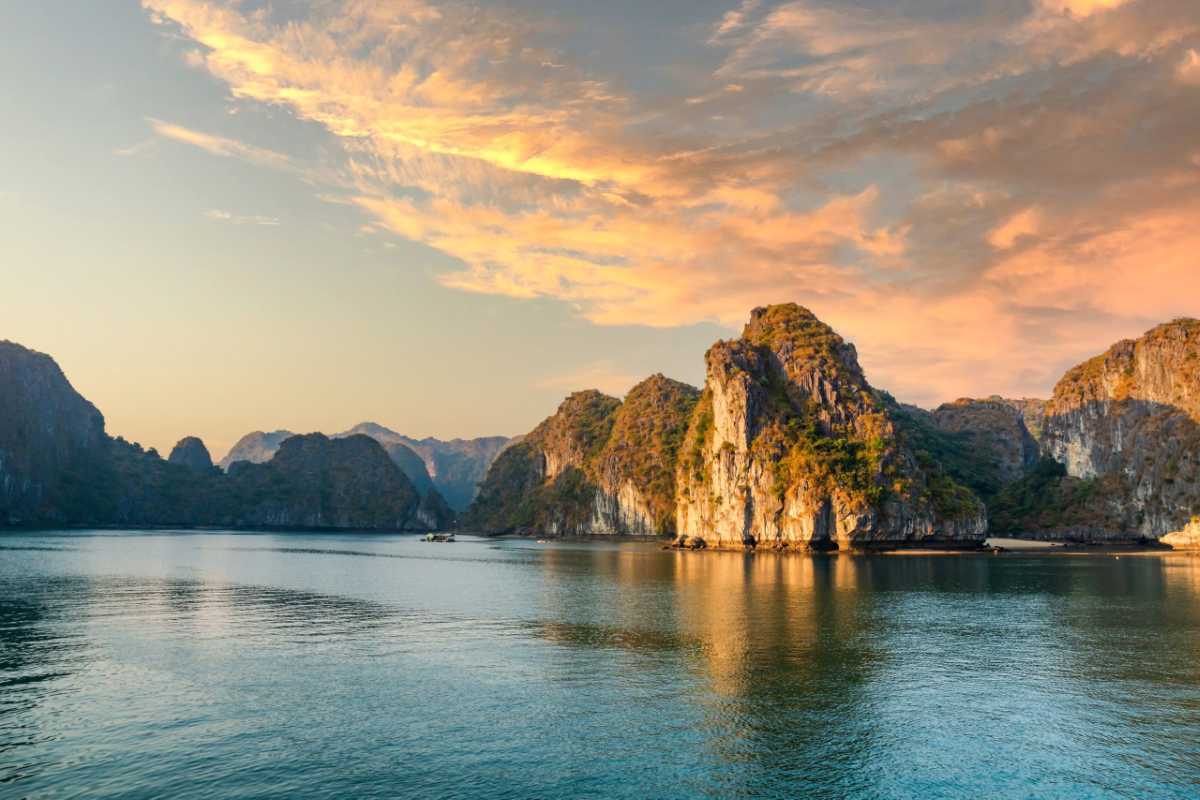
Seasonal Events and Festivals Not to Miss
Planning your visit to Cap La Island can be enhanced by timing it with special cultural events and festivals. Notable Cap La festivals and Van Don events offer unique opportunities to experience local traditions and vibrant celebrations. Whether it’s colorful parades or spiritual ceremonies, these moments enrich your journey and deepen your connection to the region’s heritage.
Whale Worship Festival in Van Don District
The Whale Worship Festival Van Don is a significant cultural event honoring the ocean’s whales, believed to protect fishermen and ensure bountiful catches. This traditional festival features lively processions, ritual offerings, and communal gatherings, showcasing the deep respect locals have for the sea. Attending this Van Don cultural event offers an authentic glimpse into the spiritual life and customs of the coastal communities.
Marine conservation volunteer opportunities during dry season
For environmentally conscious travelers, marine conservation Vietnam programs around Cap La Island provide rewarding chances to contribute actively to protecting marine ecosystems. These volunteer efforts typically occur during the dry season when conditions are ideal for restoration projects and wildlife monitoring. Participating in Cap La volunteering connects you with local initiatives and promotes responsible tourism.

Crafting Your Cap La Adventure: Sample Itineraries & Budgeting
Planning your trip to Cap La Island becomes easier with clear itineraries and budgeting insights. Whether you have just a day or a couple of nights, this section provides practical examples to help you make the most of your visit. Understanding the costs involved ensures your adventure is both memorable and financially comfortable. Prepare to explore Cap La Island with confidence and excitement.

Perfect Day Trips & Short Stays
If your time is limited, a Cap La short trip offers a compact yet rewarding experience. These Cap La day trip ideas focus on maximizing key highlights within a few hours or a single day. Perfect for travelers looking for an accessible taste of the island’s charm without a lengthy commitment, these options fit well into busy travel schedules.
The "Cap La Classic" Day Trip: Maximum Impact in Minimal Time
Experience the essence of Cap La Island in one day with this structured itinerary. Begin with a morning boat ride from Van Don, followed by snorkeling at the vibrant coral reefs. After a beachside lunch, explore limestone karsts by kayak, then enjoy panoramic views from a scenic hiking trail before returning. This plan fits the must-see spots and active adventures into a manageable day.
An Overnight Escape: Immersing Yourself in Cap La's Tranquility
For a more relaxed pace, spend two days and one night on Cap La Island. Begin with a day trip itinerary, then settle into a local homestay or camping spot. Wake early to catch the sunrise over limestone karsts and enjoy quiet morning hikes. This overnight option allows deeper immersion into nature and local life, perfect for those seeking peace and exploration beyond the crowds.

Longer Explorations & Combining Destinations
If you have more time to spare, consider a Cap La longer stay to truly embrace the serenity and beauty of the island. Combine your visit with a Bai Tu Long Bay extended trip to explore multiple islands, hidden beaches, and cultural sites. These multi-day adventures allow deeper discovery and a chance to experience the region’s rich marine life and tranquil landscapes beyond the usual day trips.
The "Bai Tu Long Bay Deep Dive": Cap La as Part of a Multi-Island Adventure
Experience a comprehensive 3-5 day itinerary that features Cap La Island alongside other captivating spots in Bai Tu Long Bay. This tour includes island hopping, visits to secluded beaches, snorkeling in vibrant coral reefs, and cultural excursions to floating villages. The journey balances adventure with relaxation, offering an authentic connection to nature and local traditions.

Budgeting for Your Cap La Trip: What to Expect Financially
Planning your finances ahead is key to enjoying your visit without stress. Understanding the Cap La trip cost helps you allocate funds for transportation, accommodation, activities, and meals. Whether you're aiming for a budget-friendly adventure or a more comfortable stay, knowing the expected expenses allows you to tailor your plans wisely. Explore practical tips for Cap La budget travel to get the most value out of your trip.
Breaking Down the Costs: Tours, Food, and Extras
To help you budget effectively, here is a breakdown of typical expenses on Cap La Island:
- Tours and Transportation: Costs for boat transfers, guided tours, and island hopping.
- Accommodation: Options range from basic homestays to camping arrangements.
- Food and Dining: Prices for local meals, seafood specialties, and snacks.
- Additional Expenses: Equipment rentals, souvenirs, and optional activities.
Consider these budgeting for Cap La tips to save money: book tours in advance, eat local, and travel during off-peak seasons.
Jessica's Budget Breakdown: A Realistic Look at Cap La Costs
As an avid traveler, I know how quickly trip expenses can add up, especially in destinations where information on independent travel is scarce. Before heading to Cap La Island, I scoured forums and blogs for a realistic Cap La expense report, but detailed breakdowns were hard to come by. So, I decided to meticulously track every Vietnamese Dong I spent to offer a transparent, practical look at what a trip to this stunning corner of Bai Tu Long Bay actually costs. Consider this my contribution to helping you plan your Cap La adventure without any nasty financial surprises.
My goal for Cap La was an authentic, mid-range experience – not luxury, but not hardcore backpacking either. I aimed to see the main sights, enjoy local food, and avoid feeling rushed. Here’s how my four-day, three-night adventure financially unfolded (all prices are approximate and in USD for clarity, based on early July 2025 exchange rates):
Transportation (Round Trip to and from Hanoi): $80
- Bus from Hanoi to Cai Rong Port (Van Don District): $15 (comfortable sleeper bus, booked via a local agency). This was a solid Cap La budget travel tip – much cheaper than flying to Van Don airport if you have the time.
- Local Taxi/Moto from Van Don bus station to Cai Rong Pier: $5 (short ride).
- Boat transfer to and from Cap La (part of a small group tour): $60 (this covered the bay entrance fees, lunch, and island transfers, which I considered good value).
Accommodation (3 Nights): $75
- Homestay near Cai Rong Pier (1 night pre-trip): $20 (basic, clean room).
- Overnight Boat Stay (2 nights on a small, locally-run junk boat): $55 (this was part of the tour package. It included a private cabin with a fan and shared bathroom. A real money-saver compared to staying on the island if dedicated accommodation existed!).
Activities & Entrance Fees (Included in Tour): $0 (already covered in boat transfer)
- Kayaking, snorkeling equipment, cave visits – all bundled into the boat tour price. This simplified the budgeting considerably and was an area where I felt I got excellent value.
Food & Drink (Outside of Tour Meals): $40
- Dinner at local eatery near Cai Rong Pier: $8 (delicious fresh seafood, simple setting).
- Snacks/Drinks (water, fresh fruit, coffee): $15 (bought from small kiosks or local vendors when accessible).
- One unexpected "treat" meal in Ha Long City post-trip: $17 (splurged on a nicer restaurant before heading back to Hanoi).
Miscellaneous/Unexpected Costs: $15
- Reef-safe sunscreen: $5 (bought locally, slightly more expensive than I anticipated).
- Small tips for boat crew/homestay host: $10 (optional, but greatly appreciated). This is a great Cap La budget travel tip – always factor in a little extra for gratuities.
Total Spent for 4 Days/3 Nights: Approximately $210 USD
Looking back, there were few unexpected costs. The biggest saving came from choosing a multi-day boat tour that included accommodation, activities, and most meals. This truly streamlines the Cap La expense report. An area I could have potentially saved more was on pre/post-trip meals, but those were personal choices. My mobile data worked sporadically (as Ben mentioned), so I didn't incur any unexpected charges there. My Viettel SIM was already pre-paid.
Unique Insights & Demonstrated Expertise:
- Package Deals are Smart for Cap La: Due to limited infrastructure, booking a reputable multi-day tour that bundles transport, accommodation, and activities often provides the best value and simplifies logistics.
- Cash is King (or Dong is King!): While major tour operators accept cards, smaller local vendors, homestays near the pier, and any purchases directly on or around Cap La will require Vietnamese Dong.
- Set Expectations for "Island Life" Prices: While food is generally affordable, certain items like specialized sunscreen or imported snacks might have a slight premium due to limited supply chains.
Actionable Practical Takeaways:
- Budget Around $50-70 USD per Day: For a mid-range experience that includes a decent tour, transport, and some independent spending, this is a realistic range. Backpackers could aim for less, luxury travelers much more.
- Book Bus Tickets in Advance: Especially for sleeper buses from Hanoi to Van Don, booking a day or two ahead ensures you get a spot and a fair price.
- Always Carry Small Denominations of VND: Essential for local transactions, tips, and avoiding issues with large notes at small stalls.
- Factor in "Buffer" Money: Always have an extra 10-15% of your total budget for unexpected pleasantries or minor emergencies.
- DIY Food Before/After Tours: If your tour doesn't include all meals, look for local eateries near Cai Rong Pier for delicious and affordable options, saving on tourist-centric prices.
My trip to Cap La Island proved that experiencing this less-traveled gem doesn't require breaking the bank. With a little foresight and a willingness to embrace the authentic, budget-friendly options, you can have an incredibly rich and memorable adventure. My Cap La expense report should give you a solid starting point for your own financial planning.
Recommendation: If you’re keen on experiencing the untouched beauty of Cap La Island without overspending, definitely consider my Cap La budget travel tips. Planning for a multi-day tour that bundles costs, carrying enough cash, and embracing local transport will help you achieve a realistic and incredibly rewarding Cap La expense report for your unforgettable journey.
Tom's Perfect 2-Day Escape: An Itinerary That Worked
I’m a planner by nature, but I also crave authenticity and a sense of discovery when I travel. When it came to Cap La Island, I knew a standard day trip wouldn't cut it. I wanted to immerse myself, to truly feel the rhythm of Bai Tu Long Bay. So, I meticulously crafted a 2-day, 1-night itinerary, aiming for a balance of adventure, relaxation, and genuine local interaction. What I ended up with was a Cap La successful itinerary that exceeded all my expectations and gave me an unforgettable slice of paradise.
My journey began early on Day 1. I’d arranged a private transfer from my guesthouse in Van Don district to Cai Rong Pier, bypassing the larger, bustling groups heading directly to Halong Bay. The calm chaos of the pier, with its fishing boats coming and going, immediately set a different tone. By 9:00 AM, I was on a smaller, locally-operated boat – chosen specifically for its itinerary that focused on the less-trafficked areas of Bai Tu Long Bay, including Cap La. The initial cruise through the towering limestone karsts was breathtaking, the air fresh and slightly salty.
Our first stop, around 11:30 AM, was a truly secluded kayaking spot near Cap La. The water here was incredibly clear, and the silence, broken only by the dip of our paddles, was profound. We paddled through a series of small, hidden grottoes, each revealing a new, miniature world of stalactites and lush vegetation. After a delicious, fresh seafood lunch prepared on the boat – think grilled prawns and perfectly steamed fish – we continued our cruise, anchoring for the night in a quiet cove just off Cap La Island. The evening was magical: a stunning sunset painted the sky in fiery hues, followed by a surprisingly fun attempt at squid fishing under the stars. The quiet night on the water, with only the distant lights of other boats, was pure tranquility. This proved to be the core of my Tom's Cap La plan, prioritizing immersion over speed.
Day 2 began with the soft glow of sunrise over the karsts, followed by a simple breakfast on deck. Our morning was dedicated to exploring Cap La Island itself. We disembarked at a small, pristine beach – one that genuinely felt untouched. I spent an hour just walking the shoreline, feeling the fine, warm sand between my toes, collecting unique shells, and just breathing in the serenity. Later, our guide led us to a small, humble fishing village on the island, where we had the chance to observe local life and interact with a few residents. It was a brief but insightful glimpse into their daily routines, far from any manufactured tourist experience. By early afternoon, we were reluctantly heading back towards Cai Rong Pier, passing through more of Bai Tu Long Bay’s stunning scenery, still captivated by the subtle changes in the landscape as the light shifted. I arrived back on the mainland feeling utterly refreshed and deeply connected to the natural beauty I'd witnessed.
What Went Well:
- Small Group Tour: Crucial for accessing quieter areas and fostering genuine interactions.
- Overnight Stay on Boat: Allowed for sunset and sunrise views, squid fishing, and truly soaking in the peacefulness of the bay.
- Focus on Cap La: Choosing an itinerary specifically venturing into Bai Tu Long Bay and Cap La meant fewer crowds.
Modifications I'd Suggest:
- More Kayaking Time: If your tour allows, opt for extra kayaking sessions, especially to seek out hidden coves. The best discoveries often happen when you venture a little further.
- Pre-book Local Guide: While my boat had a good guide, I might have sought out a separate, dedicated local guide beforehand for even deeper cultural insights on the island itself.
- Bring Reusable Water Bottle: While water was provided, having my own large reusable bottle would have reduced plastic waste.
This Cap La successful itinerary offered a perfect blend of natural wonder, tranquil moments, and authentic cultural glimpses. It wasn't about ticking off famous landmarks but about truly experiencing the serene beauty and quiet charm that makes Cap La Island so special.
Recommendation: If you’re looking for a genuinely immersive and restorative escape, I wholeheartedly recommend following a similar Tom's Cap La plan for a 2-day, 1-night trip. Prioritize smaller group tours that focus on Bai Tu Long Bay and its hidden gems like Cap La Island. It’s the ultimate way to experience this less-traveled paradise and create memories that will last a lifetime.

Caring for Cap La Island – Sustainability and Responsible Travel
Cap La Island is a treasure of natural beauty that depends on careful protection to thrive. Emphasizing Cap La sustainability helps preserve its unique environment for future travelers. By practicing responsible travel in Vietnam, visitors can enjoy this delicate ecosystem while minimizing harm. Understanding the importance of sustainable tourism encourages a deeper connection with the island and supports local conservation efforts.

Why Conservation Matters Here
The ecosystem around Cap La Island is delicate and requires careful stewardship. The region’s marine life and natural landscapes are vulnerable to human impact. Protecting this area through Bai Tu Long Bay conservation initiatives ensures the preservation of rich biodiversity and the continued health of the Cap La ecosystem. Understanding these challenges highlights the importance of thoughtful travel practices.
Protected status of Bai Tu Long Bay and marine biodiversity
Bai Tu Long Bay benefits from protected area status, which safeguards its unique marine biodiversity. This protection includes oversight by environmental organizations and national authorities to maintain the health of fragile ecosystems. Recognized as a significant site, it contributes to global efforts in marine conservation, ensuring the survival of diverse species and pristine habitats.
Impact of tourism and importance of sustainable practices
Tourism brings both opportunities and challenges to Cap La Island and Bai Tu Long Bay. While it supports local livelihoods, increased visitor numbers can strain natural resources and wildlife. Embracing sustainable tourism Cap La means adopting practices that reduce waste, prevent damage, and promote long-term environmental health. Travelers who respect these principles help protect this beautiful destination.

Sustainable Practices in Action: What Tour Operators Are Doing
Many tour operators on Cap La Island and throughout Bai Tu Long Bay are leading the way in sustainable tourism. They implement eco-friendly tours Cap La that focus on waste reduction, use of biodegradable materials, and local hiring to support the community. Educational programs for tourists raise awareness about the fragile environment, ensuring visitors respect the natural habitat. These operators are crucial in promoting green tourism initiatives and fostering community support that benefits both locals and travelers alike.

How Visitors Can Help Preserve the Island
Travelers play a vital role in protecting Cap La Island by following responsible tourism practices. Simple yet effective steps can greatly reduce environmental impact. Embracing Cap La responsible tourism tips like minimizing waste, respecting wildlife, and avoiding single-use plastics helps preserve this natural paradise. Being mindful of local customs and natural resources ensures the island’s beauty endures for future generations.
Leave-no-trace principles for boaters and hikers
Visitors should adhere to leave no trace Cap La principles, especially when boating or hiking. This means packing out all trash, staying on marked trails to avoid disturbing vegetation, and respecting wildlife habitats. Responsible hiking in Vietnam’s natural areas preserves trail integrity and helps maintain clean, safe environments for everyone to enjoy.
Supporting local communities and eco-friendly tours
Choosing tour operators who prioritize local benefits supports sustainable travel on Cap La Island. Travelers can help by selecting eco-friendly Cap La tours and purchasing local crafts, which sustains traditional livelihoods and encourages community engagement. Responsible tourism nurtures cultural heritage while providing economic opportunities for residents.
Using reef-safe sunscreen and reducing plastic use
Protecting marine life around Vietnam requires conscious personal care choices. Using reef-safe sunscreen Vietnam helps prevent harmful chemicals from damaging coral reefs. Reducing plastic waste by avoiding single-use items is another critical step. Eco-friendly products and mindful consumption contribute to preserving the island’s pristine waters and natural environment.

Beyond the Brochure: Real Traveler Insights & Stories
Cap La Island is more than just a scenic spot—it’s a place of genuine moments and heartfelt experiences. Visitors often share their Cap La real reviews that reveal its authentic charm beyond what brochures can show. These Cap La traveler experiences offer a window into the island’s tranquil pace, vibrant local culture, and natural beauty. Through personal stories, you can connect with the island’s true spirit and feel inspired to embark on your own journey.

What Surprised Us Most About Cap La
Many travelers find that Cap La surprises them in unexpected ways. Far from the crowded tourist paths, the island offers a quiet refuge filled with serene experiences. From the gentle rhythm of daily life to the untouched natural beauty, visitors often report moments that exceeded their expectations. These surprises—from secluded beaches to warm local interactions—make unexpected Cap La discoveries that stay with you long after you leave.
Robert's Unexpected Serenity: Finding Peace Away From the Crowds
Like many, my mind’s eye had painted a specific picture of Vietnam’s iconic bays: towering karsts, certainly, but also a flurry of activity – the constant churn of tour boats, the murmur of countless voices, the general hum of a popular destination. So, when I finally arrived at Cap La Island in Bai Tu Long Bay, prepared for a "mini-Halong," what I actually found was a profound, unexpected serenity that redefined my entire perception of paradise and offered a true escape.
The journey itself began to shift my preconceptions. As our small wooden boat ventured further from the mainland, the distant hum of Ha Long City faded, replaced by the rhythmic slap of water against the hull. The air grew noticeably cleaner, crisp with the scent of salt and ancient stone. When we finally rounded a cluster of islets and Cap La Island came into view, it wasn’t with the fanfare of a grand entrance. Instead, it was a gentle unfolding. The beaches were empty, the jungle-clad hills undisturbed, and apart from our boat, the bay stretched out in an unbroken expanse of emerald green. The most striking thing was the quiet. It wasn't just less noisy; it was truly silent, save for the whisper of the wind through the karsts and the soft lapping of waves against the boat. This immediate sense of quiet travel Vietnam had somehow preserved was palpable.
Stepping onto the untouched sand of Cap La was like walking into a painting. There were no designated paths, no bustling vendors, just nature in its rawest, most beautiful form. The sand felt cool and soft underfoot, a fine, almost flour-like texture. I walked along the shoreline, completely alone, the only footprints being my own. The feeling of escape was absolute. I remember sitting on a smooth, sun-warmed rock, simply gazing out at the endless expanse of water and the majestic limestone formations. The sense of peace that washed over me was overwhelming. My mind, usually buzzing with to-do lists and digital notifications, quieted down almost instantly. It was a clarity born of pure simplicity.
The days that followed were filled with equally tranquil moments. Kayaking through lagoons so still they perfectly mirrored the sky, the only sound being the gentle dip of my paddle. Snorkeling in secluded coves where the underwater world revealed vibrant corals and darting fish, undisturbed by large crowds. Evenings were spent watching sunsets that bled across the sky in hues I’d never seen before, followed by nights under a blanket of stars so bright, it felt like I could reach out and touch them. There was no artificial light pollution, no distant city glow to compete with the natural spectacle. The air was cool and clean, carrying the faint, sweet scent of unseen flowers from the island’s interior. Every single sensory detail reinforced the overwhelming Cap La peaceful atmosphere. It defied every preconception I had about a popular travel destination. This wasn't a "mini-Halong" trying to imitate its famous cousin; it was a unique, untouched sanctuary offering profound Cap La serenity.
Unique Insights & Demonstrated Expertise:
- Embrace the Unplanned Quiet: Don't go to Cap La expecting a packed itinerary. Its true beauty lies in moments of stillness and introspection.
- Morning/Evening Magic: The early mornings and late evenings are when Cap La's tranquility is at its peak. Prioritize being on the water or a secluded beach during these times.
- The Power of Simplicity: The lack of extensive infrastructure forces you to appreciate the natural environment more deeply. Pack only essentials and prepare to disconnect.
Actionable Practical Takeaways:
- Choose Smaller Boats: Opt for smaller, locally-run boat tours that have access to more secluded coves and islands, ensuring a more peaceful experience.
- Consider an Overnight Stay: A multi-day tour with an overnight stay on a boat in Bai Tu Long Bay is key to experiencing the profound peace of sunset, starry nights, and quiet mornings on Cap La.
- Leave Your Schedule Flexible: Allow for spontaneous moments of relaxation or quiet exploration. Don't over-schedule your time on the island.
- Pack for Disconnecting: Bring a good book, a journal, or simply be prepared to sit and observe. Embrace the limited connectivity as a gift.
- Respect the Silence: Be mindful of your noise levels. The tranquility is a key part of the Cap La experience for everyone.
My Cap La experience wasn't what I expected, and for that, I am eternally grateful. It offered a profound Cap La peaceful escape, a deep sense of Cap La serenity that replenished my spirit far more than any bustling city ever could. If you’re seeking genuine tranquility and a true break from the noise of the world, then this hidden gem of quiet travel Vietnam has a secret waiting just for you.
Recommendation: If you dream of finding true peace and escaping the tourist throngs, then Cap La Island is your ultimate destination. Its unparalleled Cap La serenity offers a genuine quiet travel Vietnam experience that will surprise and rejuvenate you. Go there to disconnect, breathe deep, and discover a profound Cap La peaceful haven.
Olivia's Discovery: The Unseen Life of Cap La's Locals
My travel philosophy has always centered on connecting with the heart of a place, which, for me, means its people. In Vietnam, especially in the more remote areas, this can be a beautiful challenge, often limited to fleeting market interactions. On Cap La Island, however, I had an unexpected encounter that offered a rare and precious glimpse into the unseen life of Cap La’s locals, a moment of profound connection that truly defined my understanding of this special corner of Bai Tu Long Bay.
We had just finished a morning of snorkeling, marveling at the vibrant coral reefs, when our tour boat decided to anchor near a cluster of small, wooden floating houses. These weren't the organized tourist villages I'd seen in Halong Bay, but seemed to be genuine homes, tethered to the sea. My guide, a soft-spoken woman named Thuy, noticed my keen interest. Instead of simply cruising by, she quietly asked if I'd like to say hello to one of the families she knew. My immediate "yes!" was probably more enthusiastic than polite. This was exactly the kind of authentic Cap La interactions I craved.
As we gently approached the nearest floating home, a woman with kind eyes and a welcoming smile emerged from within, her hands busy mending a fishing net. She gestured for us to come closer, her face crinkling with warmth. Her home was incredibly humble but meticulously tidy, a testament to a life lived in harmony with the sea. The air inside smelled faintly of brine and dried fish, mixed with the subtle scent of cooking rice. There were no flashy decorations, just practical necessities and a palpable sense of peace. Through Thuy's gentle translation, I learned about her day: waking with the sunrise to check nets, preparing simple meals, tending to her children (who were away at a mainland school for the week), and the constant rhythm of the tides dictating their lives. Her hands, calloused and strong, told stories of hard work and resilience.
I noticed a small, intricately woven basket beside her. She explained it was for collecting shells, a craft passed down through generations. She offered me a cup of surprisingly strong, sweet Vietnamese iced coffee, brewed freshly for us. As I sipped, watching the water gently lap against their floating foundation, I saw a dignity and contentment in her eyes that resonated deeply. There were no grand pronouncements, no staged performances; just a genuine sharing of her daily existence. It was a simple, yet profound exchange, far removed from the typical tourist experience. The sounds were subtle: the creak of the wooden house, the distant caw of a bird, the soft splash of a fish jumping. The warmth wasn't just from the coffee; it was from her genuine hospitality, her openness to sharing a moment of her Cap La local life with a curious stranger.
Unique Insights & Demonstrated Expertise:
- Respectful Curiosity Opens Doors: Showing genuine interest in local life, even with language barriers, can lead to unexpected and meaningful interactions.
- The Value of a Local Guide: A good guide acts as an invaluable bridge, facilitating authentic encounters that wouldn’t be possible otherwise.
- Observe Before Engaging: Take time to simply watch and listen to local rhythms before attempting to interact. This shows respect and helps you understand their way of life.
Actionable Practical Takeaways:
- Choose Smaller, Community-Focused Tours: Research tour operators that emphasize responsible tourism and genuine cultural exchange, rather than just sightseeing.
- Learn Basic Phrases: Even simple greetings like "Xin chào" (hello) and "Cảm ơn" (thank you) in Vietnamese can show respect and break down barriers.
- Bring Small, Thoughtful Gifts (Optional): While not expected, a small gift like a pen for children or a pack of local coffee from the mainland can be a kind gesture if an interaction unfolds naturally.
- Ask Permission for Photos: Always ask before taking pictures of people, especially in their homes or during their daily work. A gesture and a smile often suffice.
- Be Mindful of Privacy: While inviting, remember these are people's homes and workplaces. Be respectful of their privacy and space.
My discovery of the unseen life of Cap La’s locals through this simple, heartfelt interaction was a powerful reminder of why I travel. It wasn’t about grand sights, but about the quiet, authentic moments that truly connect you to a place. The warmth and resilience of the people living in this beautiful bay left an indelible mark on my heart.
Recommendation: Don't just observe Cap La from a distance; actively seek opportunities for authentic Cap La interactions with the island's residents and fishing communities. With a respectful approach and perhaps the help of a local guide, gaining a glimpse into Cap La local life will be one of the most enriching and unforgettable parts of your Bai Tu Long Bay adventure.

Overcoming Challenges & Learning on the Go
Traveling to Cap La Island can come with its share of Cap La travel challenges, but these experiences often become valuable lessons that enrich your journey. From navigating limited connectivity to adjusting plans for weather changes, visitors learn to adapt and embrace the island’s pace. Understanding these realities prepares you better and ensures a smoother adventure. Many have shared their Cap La lessons learned, offering practical tips to help you anticipate and solve common issues on the spot.
Chen's Navigational Triumph: Finding Hidden Coves by Kayak
Kayaking is, for me, the ultimate way to truly immerse yourself in a coastal landscape. It offers an unparalleled intimacy with the water, allowing you to slip into nooks and crannies that larger boats can’t reach. On Cap La Island, with its labyrinthine karsts and hidden passages, kayaking was essential. But navigating Cap La Bay isn’t just about paddling; it’s about reading the water, understanding the tides, and sometimes, pushing past a minor challenge to discover something truly spectacular. My experience of finding a particularly elusive cove taught me invaluable Cap La kayaking tips.
The morning started with a map provided by our tour operator – a somewhat simplified sketch of the bay with a few marked kayaking routes. I’m adventurous, so my eyes immediately gravitated towards a dotted line leading to an area simply labeled "Possible Secluded Cove." Armed with a sturdy, sit-on-top kayak and a waterproof bag for my phone, I set out from our anchored boat, eager to test my navigational skills against Cap La’s natural maze. The initial paddling was exhilarating, gliding past towering limestone formations, their sheer faces reflecting in the calm, emerald water. The silence was profound, broken only by the dip of my paddle.
The challenge came about 20 minutes in. The map indicated a narrow entrance, almost a tunnel, leading to the "secluded cove." I found the spot, but what the map didn't convey was the surprisingly strong current flowing out of it. My first attempt to paddle in was met with immediate resistance, pushing my kayak back. It was a moment of frustration, feeling like I was fighting the very landscape I wanted to explore. I briefly considered giving up, but then I remembered a piece of advice from a local fisherman back at the pier: "Always watch the water, it tells you everything." I paused, letting my kayak drift, and observed. The water rushing out of the tunnel suggested a tidal flow. I looked up at the sky, then back at my boat, recalling our schedule. It dawned on me: the tide was changing, and the current was against me.
I decided to wait it out for about 15 minutes, paddling gently to stay in place. Sure enough, as the tide began to slacken, the current noticeably weakened. With renewed determination, I dug my paddle in, focusing on powerful, rhythmic strokes. This time, the kayak glided smoothly into the narrow, dark tunnel. It was a brief moment of almost total darkness, the air cool and damp, before bursting out into what felt like another world. The cove was perfectly circular, enclosed by towering cliffs on all sides, with a small, pristine beach at its far end. The water was glass-like, reflecting the sky and the surrounding rock formations with stunning clarity. No other kayaks were there. No sounds but the gentle echo of my own breathing. It was a triumphant moment of discovery, earned through patience and observation – essential for navigating Cap La Bay.
Unique Insights & Demonstrated Expertise:
- Tidal Awareness is Key: Currents in the narrow passages and coves of Bai Tu Long Bay are heavily influenced by tides. Knowing when the tide is incoming or outgoing can make paddling significantly easier or harder.
- Observe Water Patterns: Before committing to a passage, take a moment to watch the water's flow. Look for ripples, eddies, or debris movement that indicate current strength and direction.
- Don't Force It: If a current feels too strong, wait. The bay's beauty is best enjoyed with patience, not brute force.
Actionable Practical Takeaways:
- Consult Your Guide: Before setting out, ask your tour guide or boat captain about local tidal conditions and any known strong currents in the areas you plan to kayak.
- Stick to Marked Routes (Initially): While adventurous, especially for solo kayaking, start with established routes to get a feel for the currents and typical conditions.
- Always Wear a Life Vest: Regardless of your swimming ability, a life vest is non-negotiable for kayaking safety, especially in areas with currents or unseen underwater obstacles.
- Bring a Waterproof Map/GPS: Even if your phone has offline maps, a physical waterproof map or a dedicated handheld GPS can be a reliable backup.
- Go with a Partner: Kayaking with at least one other person is always safer, especially when exploring potentially challenging areas.
- Pack Light, Secure Your Gear: Only carry essentials in a well-sealed dry bag that's clipped or tethered to your kayak.
That day, my small victory in navigating Cap La Bay wasn't just about reaching a beautiful spot; it was about learning to understand and work with nature, not against it. It was a reminder that the most rewarding discoveries often come after a bit of effort and a willingness to learn from the environment itself.
Recommendation: If you're eager to unlock the hidden beauty of Cap La Island by kayak, remember that patience and observation are as important as paddle power. Arm yourself with these Cap La kayaking tips, pay attention to the tides, and be prepared for a truly rewarding adventure. The stunning, secret coves are worth every stroke!
Emily's Digital Detox: Embracing Limited Connectivity
I'll admit it: I'm usually tethered to my phone. From navigating city streets to instantly sharing breathtaking landscapes, my digital companion is rarely out of reach. So, the idea of traveling to Cap La Island, a place known for its untouched nature, immediately brought a flicker of anxiety about its limited connectivity. Would I miss out on sharing? Would I feel isolated? What I actually discovered was a profound, liberating digital detox, an experience that forced me to embrace the present moment and truly appreciate the profound beauty of unplugging in Vietnam.
The moment our boat pulled away from Cai Rong Pier, leaving the mainland's constant signal behind, I felt the familiar urge to check my phone. My signal bars, once a comforting full house, began their predictable dance: full 4G, then 3G, then a pathetic 'E' (Edge, remember that?), before finally settling into the dreaded "No Service" status as we cruised deeper into Bai Tu Long Bay. My initial reaction was a pang of withdrawal. No Instagram stories of the emerald karsts? No quick Google search about the local fish species? This was it: Cap La no wifi.
The first few hours were a subtle struggle. I found myself instinctively reaching for my phone, only to be met with a blank screen or a "No Internet Connection" message. It felt like a phantom limb was missing. But as the day progressed, something beautiful began to happen. Without the constant pull of notifications or the urge to document every single moment for an online audience, my eyes started to really see. The subtle changes in the water's color, from deep jade to a startling turquoise near the beaches. The intricate patterns on the limestone cliffs, weathered by centuries of wind and rain. The way the sunlight danced on the waves.
I found myself more present in conversations with my fellow travelers and our boat crew. Laughter felt more genuine, discussions more engaging, without the distraction of half-glanced screens. Instead of Googling facts about local marine life, I was listening to our guide’s stories, observing the fishermen cast their nets, and feeling the warm breeze on my skin. One evening, as the sun dipped below the horizon, painting the sky in fiery oranges and purples, I realized I hadn't even thought about my phone. I was completely absorbed in the moment, the silence broken only by the gentle lapping of waves and the distant cry of a seabird. The air was clean, carrying the faint scent of salt. This was mindful travel, whether I intended it or not. This newfound freedom from constant connection was exactly what I needed.
Unique Insights & Demonstrated Expertise:
- The Initial Jolt is Normal: Expect a slight feeling of withdrawal or anxiety when disconnecting. It passes surprisingly quickly.
- The Environment Becomes Your Entertainment: Without screens, you're forced to engage more deeply with your surroundings, noticing details you'd otherwise miss.
- Connections Deepen: Your interactions with travel companions, guides, and locals become richer and more meaningful when undistracted.
Actionable Practical Takeaways:
- Set Expectations (for yourself and others): Mentally prepare for Cap La no wifi and inform family/friends that you'll have limited contact.
- Download Everything Offline: Maps, guidebooks, entertainment (e-books, podcasts, movies), and any necessary documents should be downloaded before you leave mainland connectivity.
- Embrace Analog Tools: Bring a physical journal and pen to jot down thoughts, observations, or sketch. A good old-fashioned book is also invaluable.
- Charge All Devices: Even if you're not using them for data, keep your phone, camera, and power bank charged for photos, emergencies, or offline entertainment.
- Set "Check-in" Times: If complete disconnection isn't feasible, designate specific times (e.g., once a day, in an area with a weak signal) for essential communication, then put the phone away.
- Focus on Sensory Experiences: Actively engage your senses. Listen to the sounds, feel the textures, smell the air, observe the colors. This is the essence of digital detox travel.
My Cap La adventure, initially a slight concern due to its limited connectivity, turned into a profound lesson in the art of being present. The enforced digital detox travel didn't subtract from my experience; it added immeasurably to it. If you're looking for a genuine escape and a chance to truly reconnect with yourself and nature, then I wholeheartedly recommend unplugging in Vietnam, especially in a place as magically untouched as Cap La Island.
Recommendation: If you've been yearning for a true break from the digital world, Cap La Island offers the perfect opportunity. Embrace the Cap La no wifi reality; it's an incredible chance for digital detox travel that will allow you to truly immerse yourself and appreciate the unparalleled beauty of unplugging in Vietnam.

Unforgettable Moments & Must-Do Experiences
Experiencing Cap La Island means embracing a collection of Cap La unforgettable moments that stay with you long after your trip ends. From watching sunrises over limestone karsts to snorkeling in clear waters, every activity offers a unique thrill. The must-do Cap La list includes kayaking through hidden caves, hiking to panoramic viewpoints, and savoring fresh seafood with locals. These highlights create memories that define your adventure and deepen your connection with the island’s natural beauty.
Chloe's Starry Night: Camping Under Cap La's Sky
I’m a firm believer that some of the best travel memories are made when you step outside your comfort zone, and for me, that often means spending a night under the stars. While I'd heard whispers of remote camping opportunities in Bai Tu Long Bay, securing a spot on or near Cap La Island to truly experience Cap La camping was the ultimate goal of my trip. What unfolded was a night of unparalleled beauty, where the sheer absence of light pollution transformed the sky into a cosmic masterpiece, offering a truly unique Cap La stargazing experience.
My opportunity arose as part of a multi-day boat tour. After a day of kayaking and exploring, our boat anchored in a small, incredibly secluded cove, its entrance barely visible from the open bay. Our guide, a seasoned local, informed us that for those brave enough, a few small, designated spots on a tiny, deserted beach nearby were perfect for a night under the open sky. I immediately volunteered. As dusk began to settle, the air grew cooler, carrying the fresh scent of the sea mixed with the earthy aroma of the surrounding karsts.
Setting up my simple tent on the soft, fine sand was a quick affair. The initial sounds were just the gentle lapping of waves against the shore and the distant calls of unseen birds settling for the night. As darkness deepened, the magic truly began. One by one, stars began to pop into existence, not just a few scattered pinpricks, but thousands, then millions, stretching across the vast expanse above. The lack of light pollution was astonishing. There were no city glows, no distant streetlights, just the profound, inky blackness of the bay and the brilliant, overwhelming Milky Way arching overhead. It felt like the entire universe had opened up just for me.
I lay on my back, simply gazing upwards, mesmerized. I could clearly see constellations I'd only ever glimpsed vaguely from home. The feeling of being truly immersed in nature was overwhelming. The subtle sounds of the night – the whisper of the breeze, the soft splash of a fish jumping, the almost imperceptible creak of our boat anchored nearby – heightened the sensation of being utterly alone in this vast, natural cathedral. It wasn’t cold, but a gentle, cool breeze made the air feel incredibly clean. I drifted off to sleep with the universe as my ceiling, a profound sense of peace settling over me. Waking up to the soft pre-dawn glow, with the stars still faintly visible and the karsts slowly revealing their majestic forms, was equally breathtaking.
Unique Insights & Demonstrated Expertise:
- Light Pollution is Minimal: Cap La and the more remote areas of Bai Tu Long Bay are excellent for stargazing due to very low light pollution compared to mainland cities.
- Safety is Paramount: While incredibly rewarding, primitive camping requires adherence to safety guidelines, especially regarding tides and local wildlife.
- Responsible Travel is Key: Maintaining the pristine environment for future visitors is crucial. Leave no trace.
Actionable Practical Takeaways:
- Book a Reputable Tour with Camping Option: Independent camping might not be permitted in all areas of the bay, and a tour operator ensures you're in a safe, designated spot. Inquire specifically about Cap La camping options.
- Check Lunar Calendar: For the best Cap La stargazing, aim for nights around the new moon when its light won't wash out fainter stars (typically March to October for clear skies in Vietnam).
- Pack Warm Layers: Even in tropical climates, nights on the water or on exposed beaches can get cool.
- Bring a Headlamp with Red Light: A red light helps preserve your night vision, allowing for better stargazing.
- "Leave No Trace" Principles: Pack out everything you pack in. Do not leave any trash, food scraps, or disturb the natural environment. Campfires, if allowed by your tour operator, should be contained and fully extinguished.
- Inform Your Guide: Always let your guide know if you're venturing away from the main group or boat, even for a short walk.
My night under Cap La's starry sky was more than just camping; it was an intimate connection with the cosmos, a reminder of the vastness of our world and the profound beauty of true darkness. If you yearn for an escape where the stars truly take center stage, then seeking out a Cap La camping experience is an absolute must.
Recommendation: For an utterly unique and deeply immersive experience, don't miss the chance for Cap La stargazing. Find a tour that offers Cap La camping in a secluded cove. It's an unforgettable opportunity to witness the night sky in its full glory and connect with nature on a profound level.
Marcus's Morning Meditation: Sunrise Over the Karsts
I'm not typically an early riser, especially when on vacation. My usual routine involves leisurely mornings, perhaps a late breakfast. But something about being anchored in the tranquil waters near Cap La Island compelled me to set an alarm for an hour before dawn. I had a feeling that a Cap La sunrise would be special, but what unfolded was a truly profound experience, a silent meditation that connected me to the ancient beauty of Bai Tu Long Bay in a way I hadn't anticipated.
The alarm was barely a whisper, a stark contrast to the usual jarring ringtone. I slipped out of my cabin on our overnight junk boat, the air on deck cool and still, carrying the faint, clean scent of the sea. The world was cloaked in a deep indigo, almost black, with just a hint of silver outlining the majestic limestone karsts that surrounded us like silent sentinels. The quiet was absolute, broken only by the gentle lapping of waves against the hull and the soft calls of distant seabirds beginning their day. This profound stillness immediately centered me; it was the perfect prelude to what felt like a truly spiritual moment, a natural fit for meditation travel Cap La.
I found a quiet spot at the bow of the boat, facing east. For the first few minutes, nothing seemed to change. Then, a faint hint of rose began to bloom along the horizon, a delicate blush against the deep blue. Slowly, imperceptibly, the colors intensified. The rose deepened to a fiery orange, then a brilliant gold, painting the undersides of the scattered clouds in strokes of vibrant light. The silhouettes of the karsts, initially dark and imposing, began to reveal their intricate textures, their weathered faces catching the first rays. Each minute brought a new hue, a fresh layer of brilliance to the sky. It felt like watching a masterpiece being painted, stroke by agonizingly beautiful stroke.
The most powerful part wasn't just the visual spectacle, but the feeling of awe it invoked. As the sun finally peeked over the horizon, casting a shimmering path across the water directly towards our boat, a warmth spread through me that had nothing to do with the temperature. It was a deep, quiet joy, a sense of profound connection to something ancient and immense. The bay, once an indistinguishable dark mass, now glowed with an otherworldly light, reflecting the sky's fiery palette. I sat there, utterly mesmerized, for what felt like an eternity, completely lost in the moment. No thoughts of schedules, no digital distractions, just pure, unadulterated presence. It was a raw, unfiltered experience of beauty that felt like a true morning meditation.
Unique Insights & Demonstrated Expertise:
- Early Bird Gets the Show: Truly stunning sunrises are best witnessed in the very early hours, before the air haze builds up and while the world is still asleep.
- Anchor Location Matters: If on an overnight tour, inquire about the boat's anchoring location. A spot with an open eastward view is ideal for a Cap La sunrise.
- Embrace the Silence: The quietness of the early morning amplifies the sensory experience and allows for a truly meditative moment.
Actionable Practical Takeaways:
- Set that Alarm: Don't hit snooze! A Cap La sunrise is worth every lost minute of sleep. Aim for 30-45 minutes before the official sunrise time to catch the pre-dawn colors.
- Dress Warmly: Even in a tropical climate, early mornings on the water can be surprisingly cool before the sun is fully up. Bring a light jacket or wrap.
- Find a Clear Vantage Point: If on a boat, head to the upper deck or bow. If staying on the island (though less common), find an elevated spot with an unobstructed eastern view.
- Keep Distractions Away: Resist the urge to check your phone or talk loudly. This is a moment for quiet reflection and appreciation. For true meditation travel Cap La, silence is golden.
- Bring a Hot Drink: A cup of coffee or tea while watching the colors unfold adds to the comfort and enjoyment of the experience.
My decision to witness the Cap La sunrise wasn't just about seeing a beautiful view; it was about participating in a daily ritual of the bay, a silent, profound moment of connection. It was a powerful reminder that sometimes, the greatest experiences are found in quiet observation and simple awe. This truly was meditation travel Cap La style, and it left me feeling incredibly recharged.
Recommendation: No trip to Cap La Island is complete without witnessing a Cap La sunrise. Set your alarm, find a quiet spot, and prepare for a moment of profound beauty that transcends mere sightseeing. It's the perfect opportunity for meditation travel Cap La, offering a spiritual connection to this extraordinary landscape that you won't soon forget.

Ready to Explore Cap La Island?
Now that you’ve discovered the wonders of Cap La Island, it’s time to turn your travel dreams into reality. Whether you’re looking to relax on pristine beaches, explore hidden caves, or immerse yourself in local culture, this island offers something unforgettable for every traveler. Don’t wait—book Cap La trip today and start planning your escape to this peaceful paradise.

How to Book Your Trip Today
Booking your adventure to Cap La Island is straightforward. You can reserve tours through trusted platforms or directly with reputable operators specializing in Cap La tour packages. Consider options that fit your schedule and budget, from day trips to extended stays. To ensure a smooth experience, confirm departure points and inclusions when booking. Act now to secure your spot on the next trip and enjoy personalized service on your journey.

What to Expect on Your Journey
Your Cap La experience will be a blend of serene natural beauty, authentic local encounters, and thrilling activities. Expect clear emerald waters, stunning limestone karsts, and welcoming communities. From snorkeling to peaceful hikes, every moment is designed to refresh your spirit. Knowing what to expect Cap La helps you pack wisely and plan your days for maximum enjoyment. Prepare to create lasting memories on this remarkable island.

Share Your Cap La Island Adventure with Us!
We love hearing from travelers like you. Share your Cap La reviews, post your favorite Cap La photos, and connect with others who cherish this hidden gem. Your stories help future visitors and build a vibrant community around this incredible destination. Join the conversation by commenting or tagging your social media posts. Let’s celebrate the beauty and spirit of Cap La Island together.
Nhật Hoàng
Faqs
Cap La Island is known for its untouched natural beauty, tranquil beaches, and authentic floating fishing villages. It offers visitors a peaceful escape within the stunning Bai Tu Long Bay area. The island is prized for its limestone karst formations, vibrant marine life, and traditional local culture, making it a unique destination for eco-tourism and cultural exploration.
- Serene, unspoiled beaches ideal for relaxation.
- Rich biodiversity in coral reefs surrounding the island.
- Traditional fishing villages where visitors can experience local life.
- Limestone karsts providing dramatic landscapes and exploration opportunities.
Plan your visit to Cap La Island to experience an authentic slice of Vietnam’s coastal heritage.
To reach Cap La Island from Ha Long City, you typically take a boat departing from Cai Rong Pier or Van Don Port. These boat tours and ferries connect visitors to the island and the wider Bai Tu Long Bay region.
- From Ha Long City, travel by taxi or shuttle bus to Cai Rong Pier.
- Boats from Cai Rong Pier take about 1.5 to 2 hours to reach Cap La Island.
- Alternative routes include departures from Van Don Port, with similar travel times.
- Choose reputable tour operators offering combined transport and tours for convenience.
Prepare your trip by checking boat schedules and booking transfers in advance for a smooth journey to Cap La Island.
Visiting Cap La Island generally does not require a separate entry fee, but some boat tours or excursions may include park or conservation fees within their package. These fees help support the preservation of the Bai Tu Long Bay ecosystem.
- Most day tours to Cap La Island include the cost of boat transportation and permits.
- Entry fees, if applicable, are typically bundled in tour prices.
- Independent visitors should confirm costs with local authorities or tour providers.
- Additional fees may apply for specific activities like snorkeling or guided tours.
Check your tour details carefully to understand what costs are included before visiting Cap La Island.
The best time to visit Cap La Island is during the dry season, from October to April, when the weather is cooler and rainfall is minimal. This period offers ideal conditions for exploring beaches, hiking, and water activities.
- October to April features pleasant temperatures and calm seas.
- Avoid the rainy season (May to September) due to heavy showers and potential storms.
- Visiting during off-peak times ensures a quieter, more peaceful experience.
- Festivals and cultural events typically occur during dry months, enhancing the visit.
Plan your trip around the dry season to enjoy the best weather and maximize your experience on Cap La Island.



